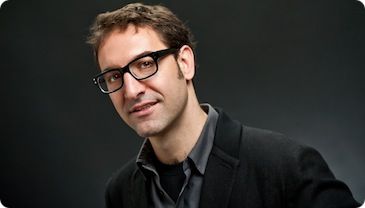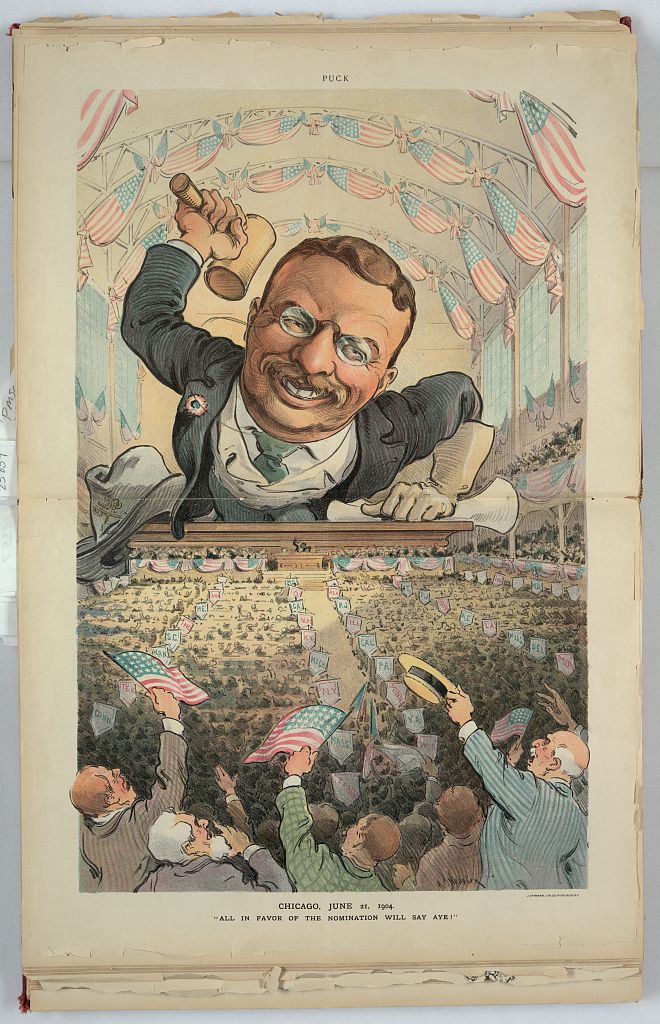
At end of his first term, President Theodore Roosevelt's popularity enabled him to dominate the Republican National Convention despite opposition from conservatives.

TR and the Democratic nominee, Alton Parker, shake hands at the start of the 1904 presidential campaign, caricatured as a boxing match refereed by Uncle Sam.

TR's dour running mate, Charles Fairbanks, was mockingly called the "Indiana icicle."
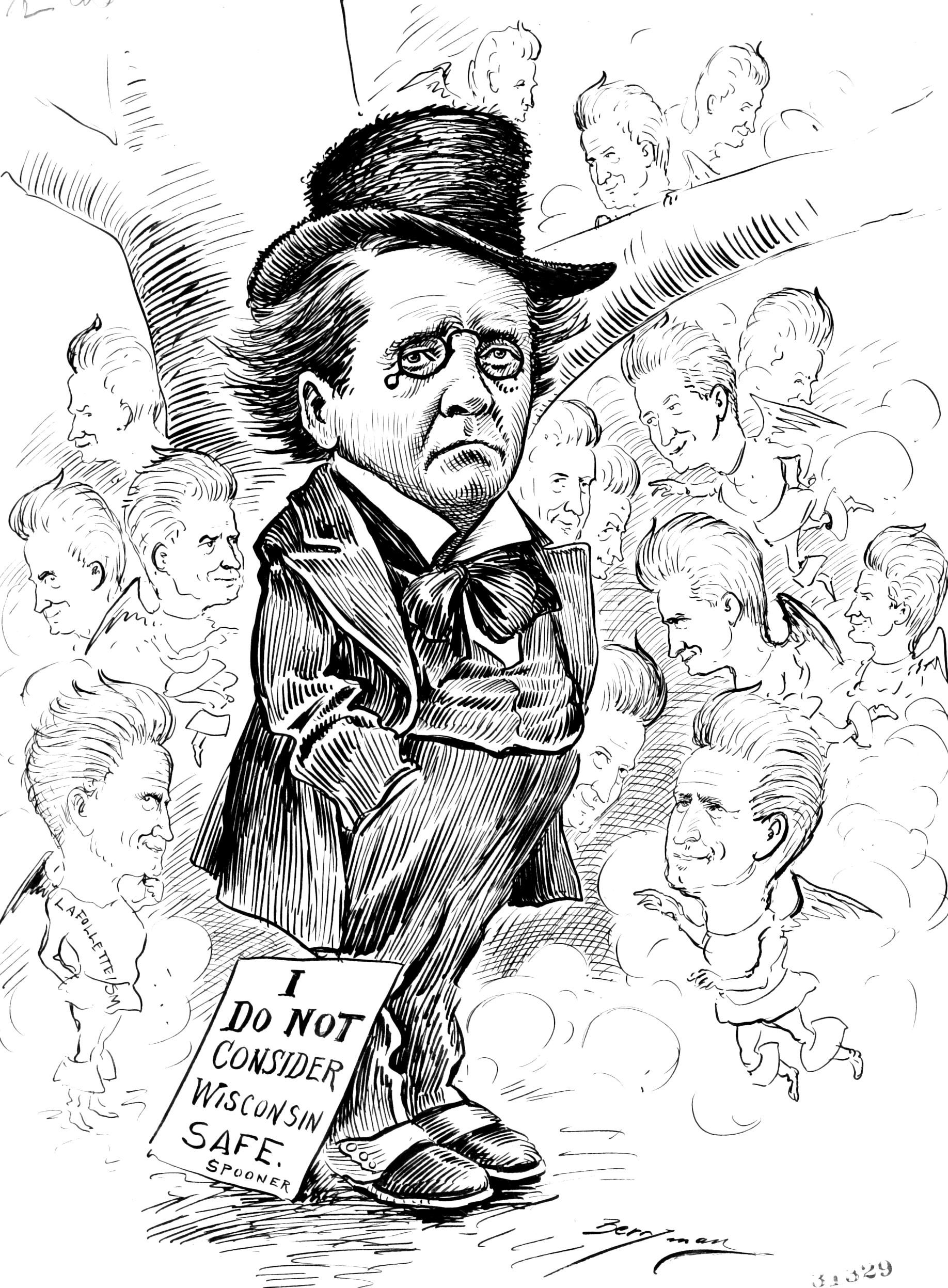
Senator John Spooner, a Wisconsin conservative, was horrified when progressive pioneer Governor Robert La Follette took control of the Wisconsin Republican Party.
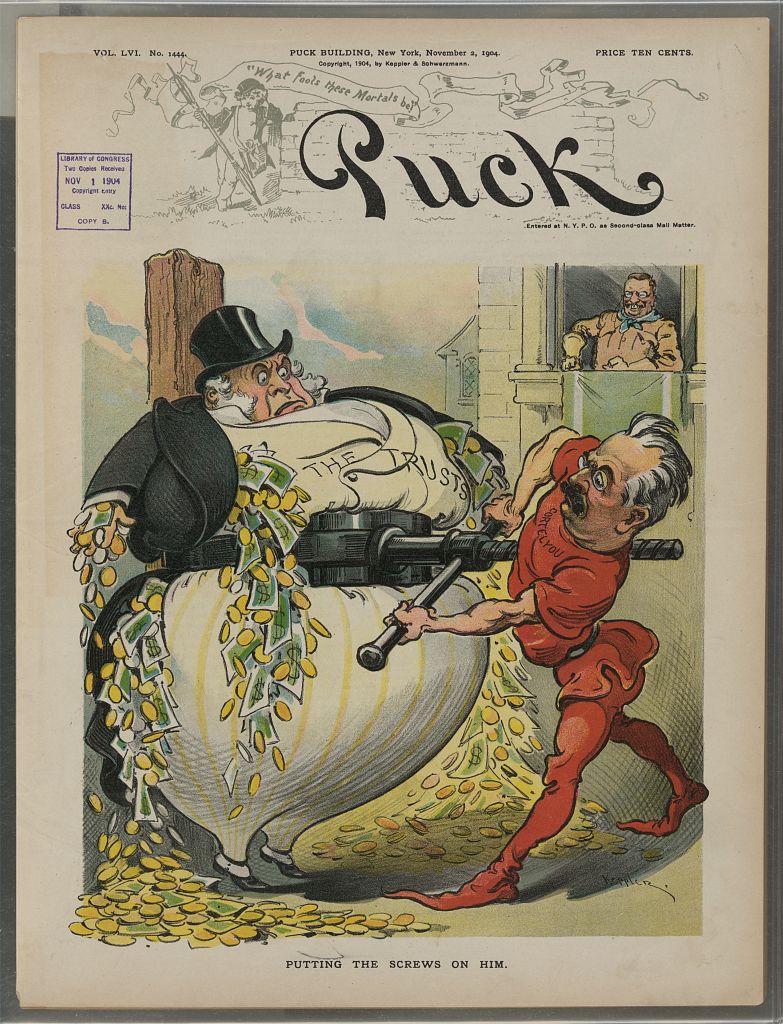
Industrialists bankrolled TR's campaign despite his trustbusting. Here, his campaign manager, George Cortelyou, squeezes money from a bloated man labeled "The Trusts."
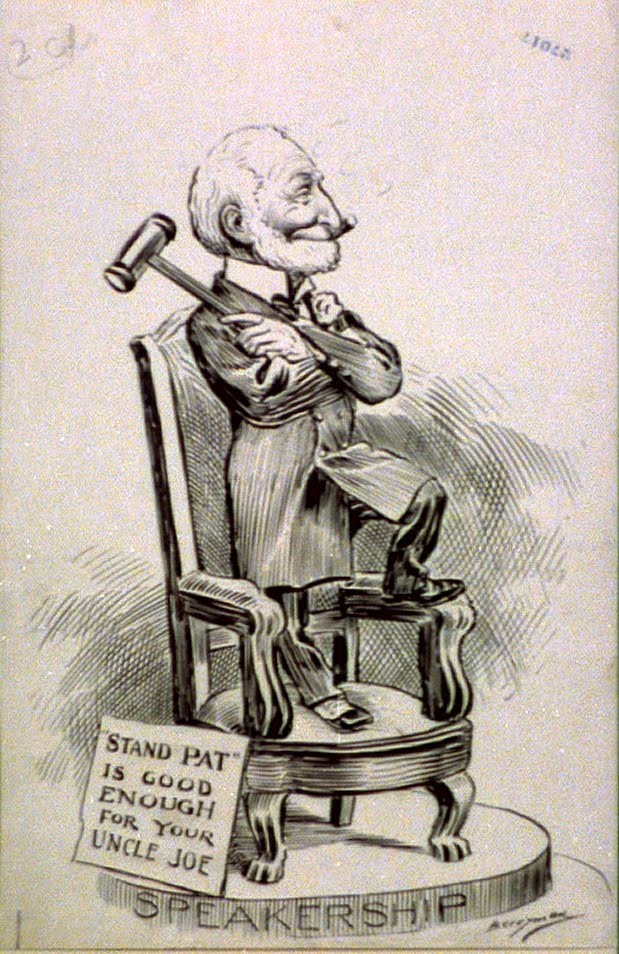
"Uncle Joe" Cannon, the iron-fisted Speaker of the House, used his authority to stifle political reform. He and his conservative Republican allies were known as Standpatters.
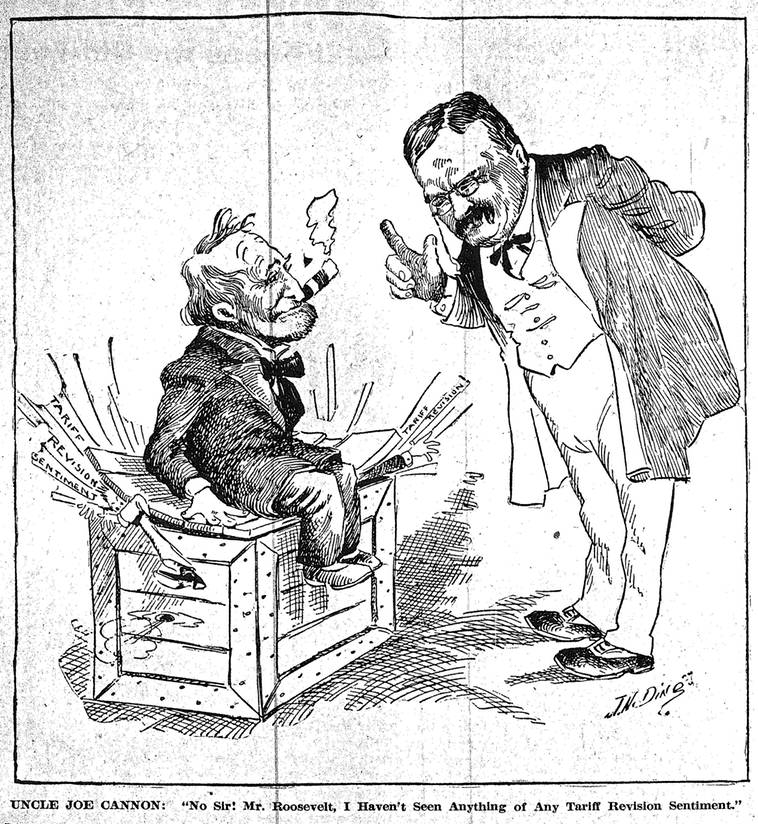
In 1905, TR quietly approached Uncle Joe about reforming the corrupt tariff system, but Cannon rebuffed him.
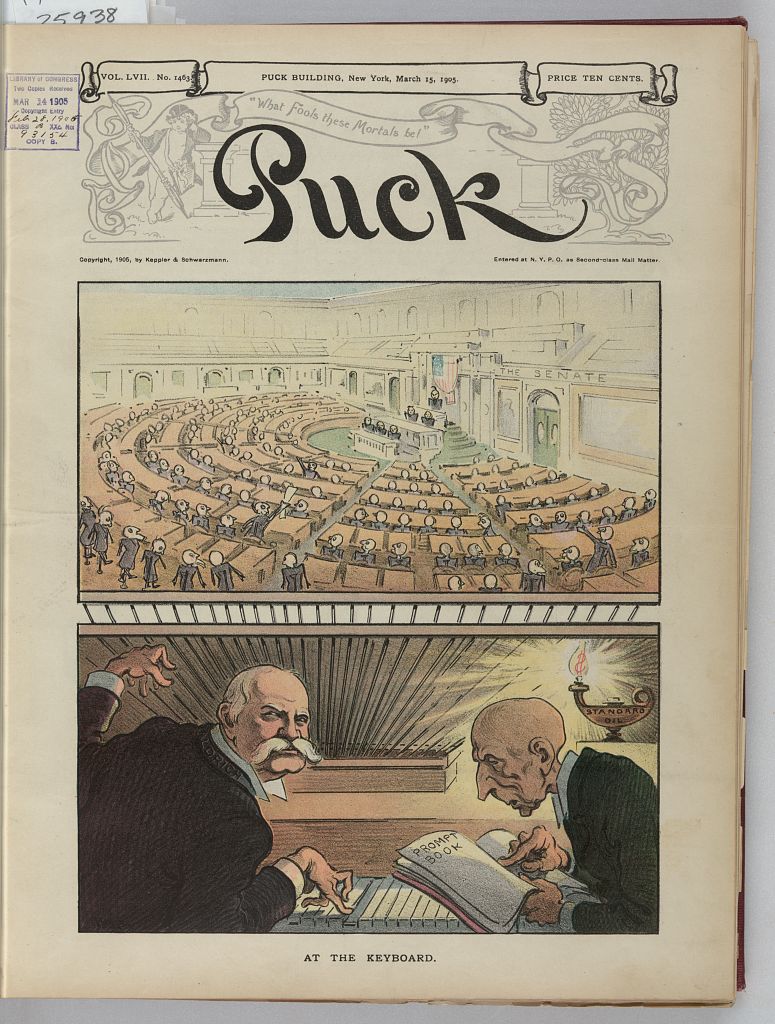
Nelson Aldrich of Rhode Island, the Republican "boss of the Senate," defended the interests of powerful industrialists like J. D. Rockefeller, caricatured here.
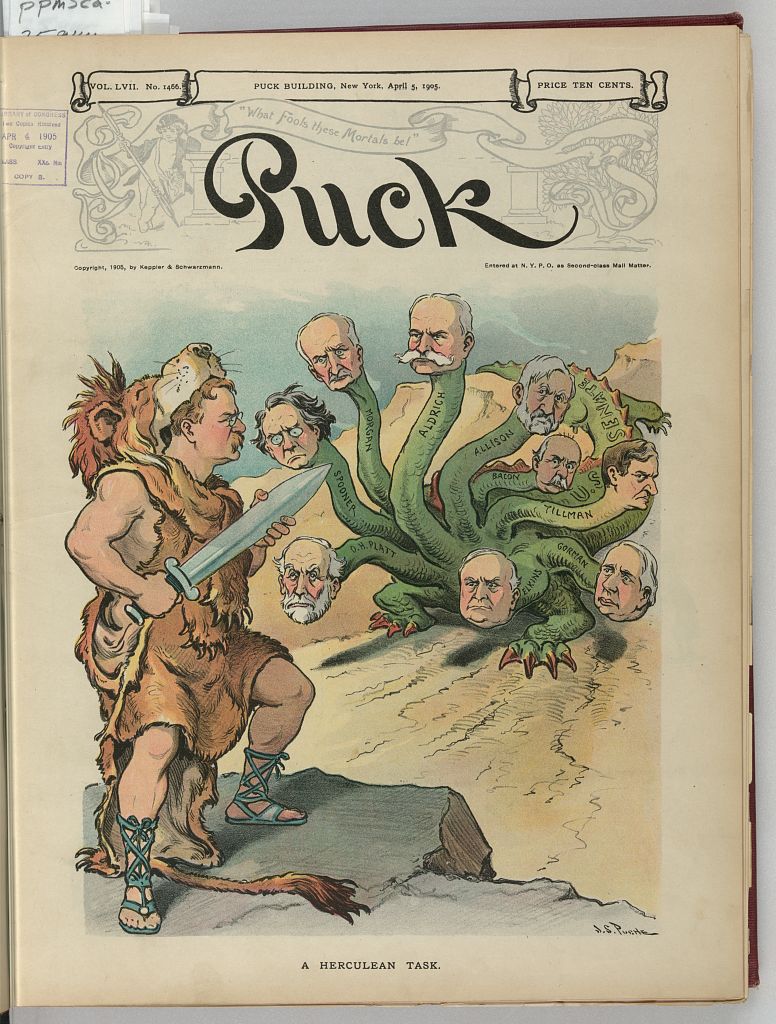
TR's relations with conservative Senate leaders deteriorated during his second term.

Trust companies benefited from high tariffs, which stifled competition. Here, Uncle Joe presses TR to abandon tariff reform: "Oh, Sir, you would not turn these helpless, half-grown babes out into a cruel world, would you?"
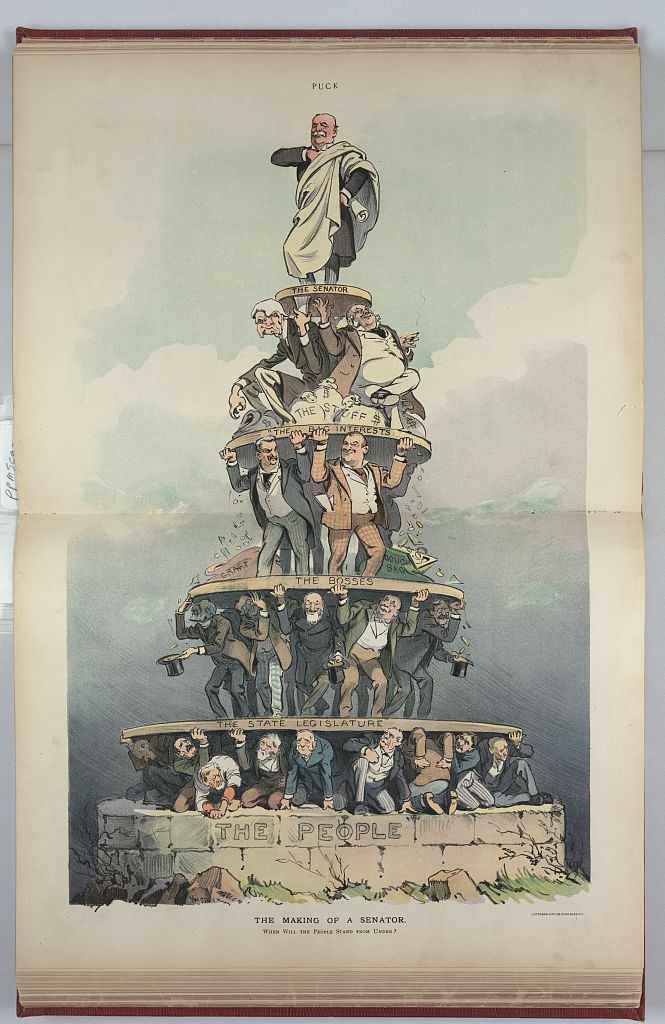
Senate elections were notoriously corrupt before the 17th Amendment. Senator Aldrich worked his way to the top with the help of powerful Republican bosses, wealthy benefactors, and corrupt Rhode Island legislators.
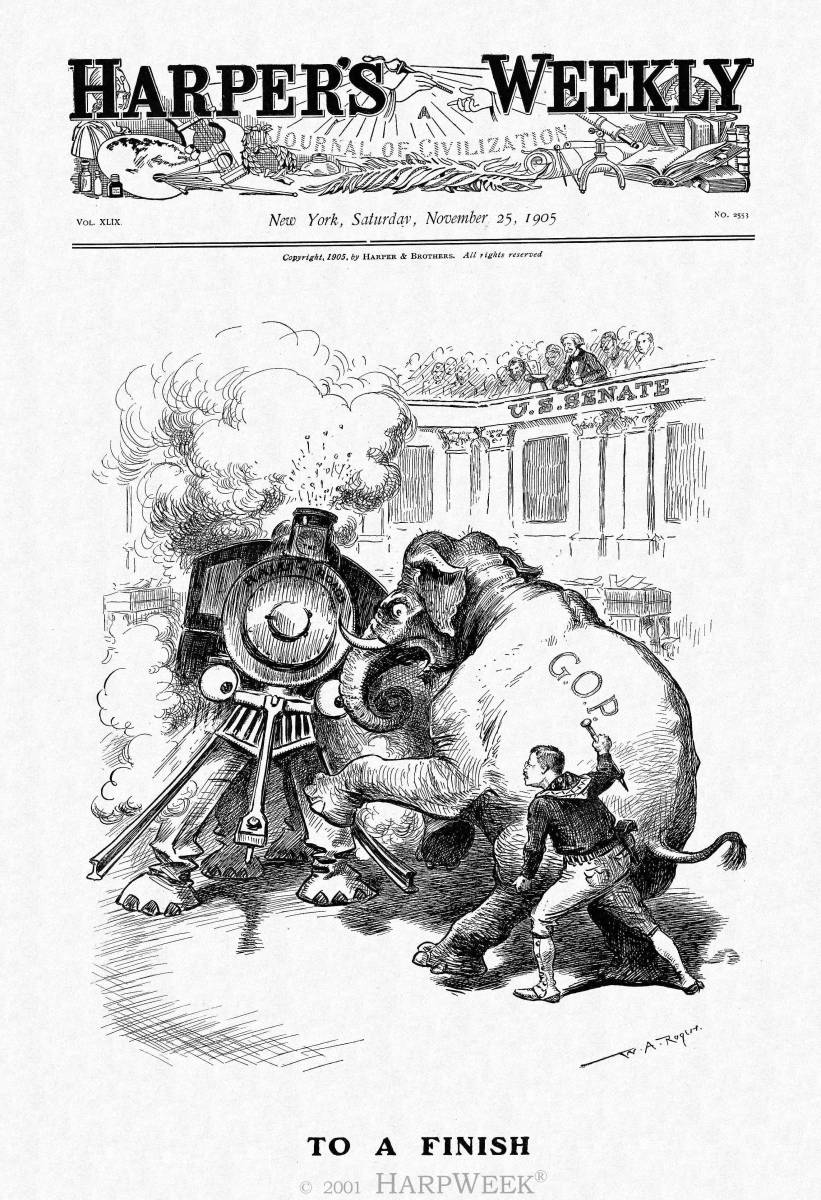
In 1905, TR tried to convince reluctant Republican congressmen to regulate the powerful railroad industry.
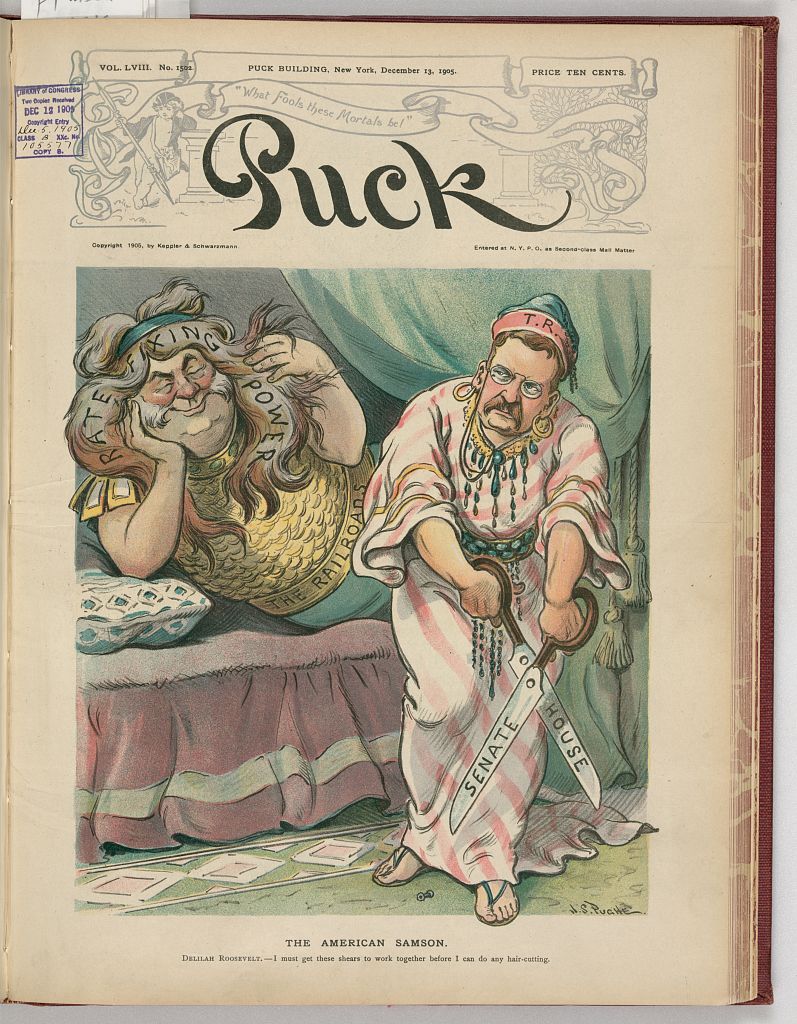
Delilah (TR) wants to cut the hair of Samson (railroad corporations) but has trouble with the scissors (Congress). Caption: "I must get these shears to work together before I can do any hair-cutting."
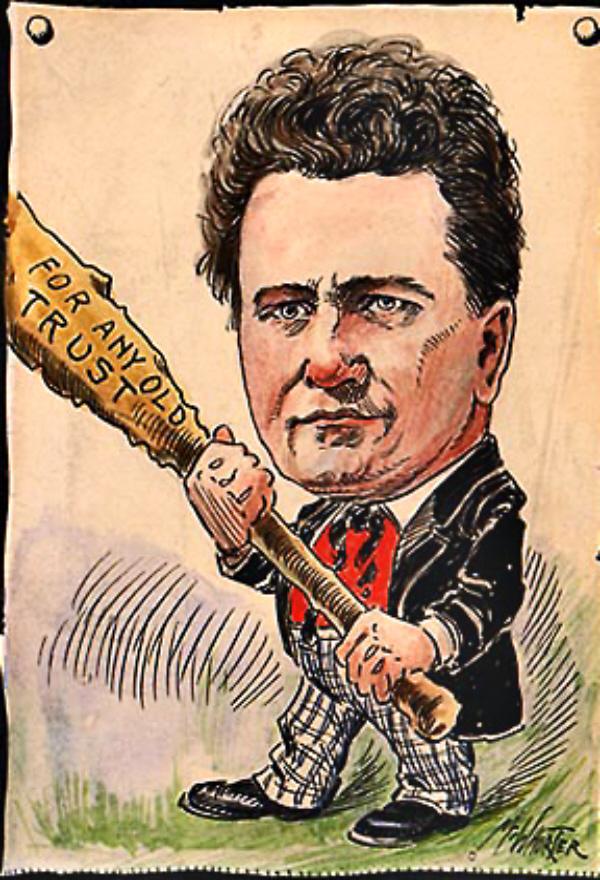
"Fighting Bob" La Follette, the progressive Republican insurgent from Wisconsin, went to the Senate in 1906 carrying a "big stick" for the trusts.
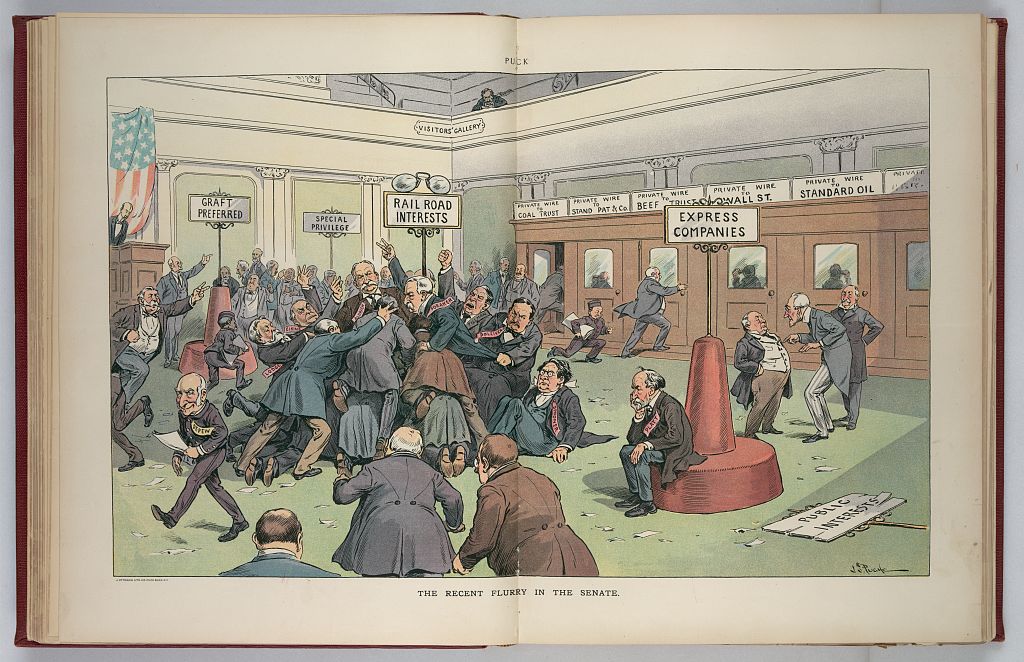
TR's railroad bill triggered a battle royal in Congress.
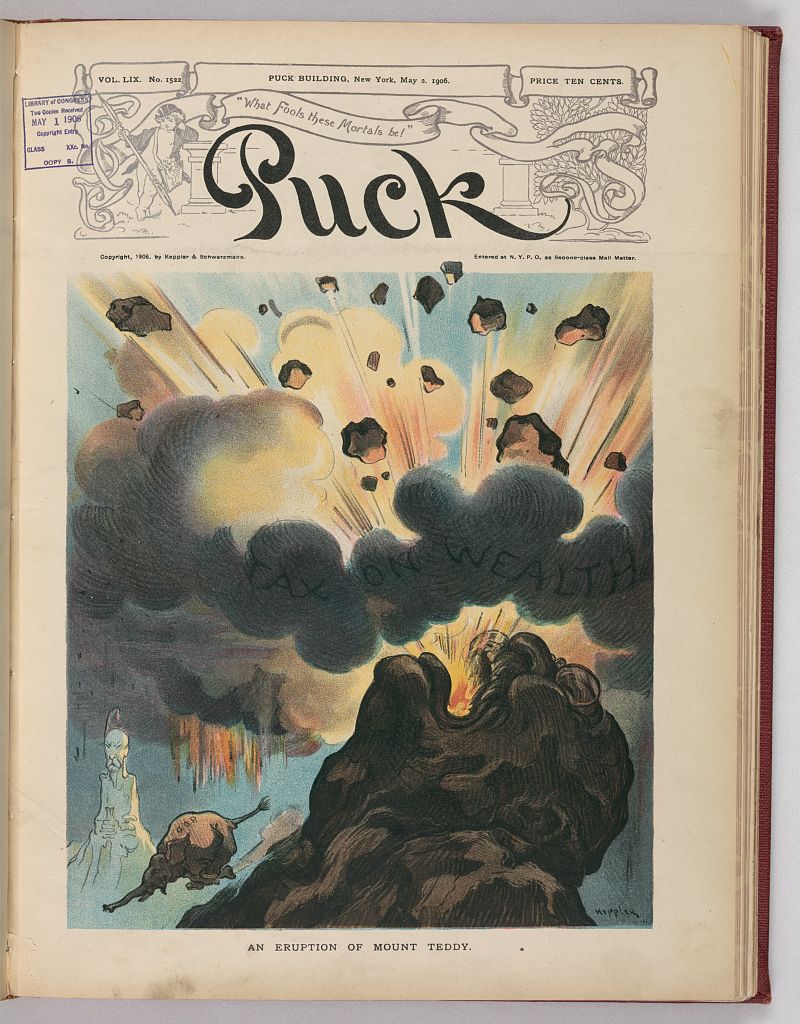
TR radicalized during his second term, much to the chagrin of Republican leaders. A snow-covered Vice President Fairbanks is depicted in the background.
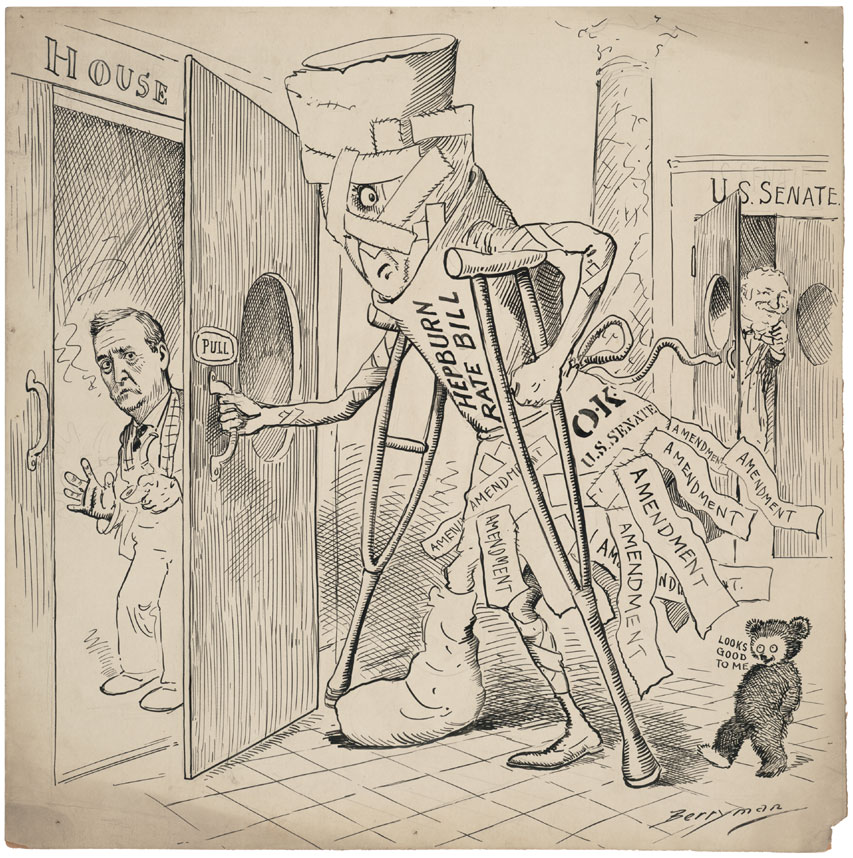
Even though Congress watered down the railroad bill with amendments, TR declared his satisfaction with the compromised legislation.
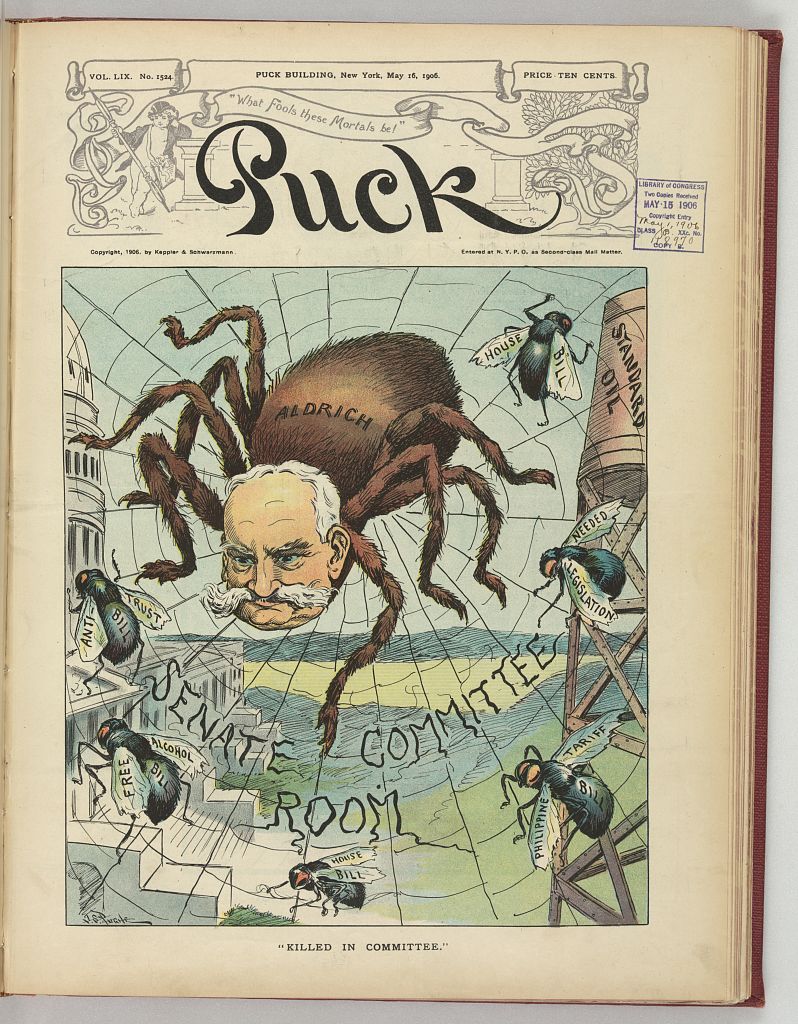
Nelson Aldrich exploited his control of Senate committees to quietly kill progressive legislation.

Vowing not to serve a third term, TR championed his friend, Secretary of War William Taft, for President.
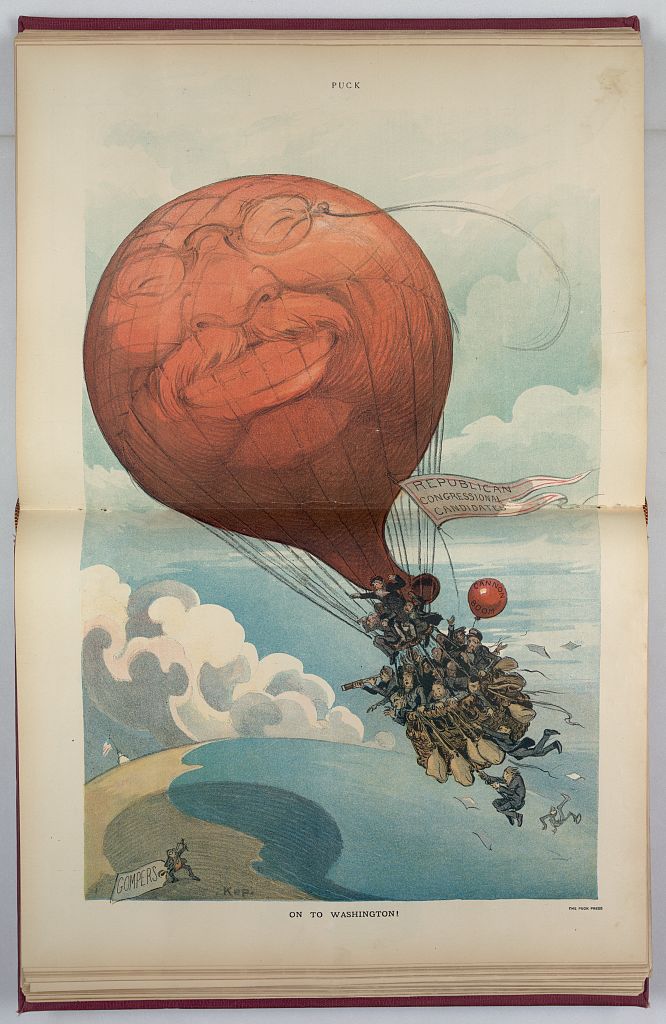
Republicans capitalized on TR's popularity at the midterms. Union leader Samuel Gompers, depicted here with a sling-shot, tried unsuccessfully to defeat Uncle Joe.
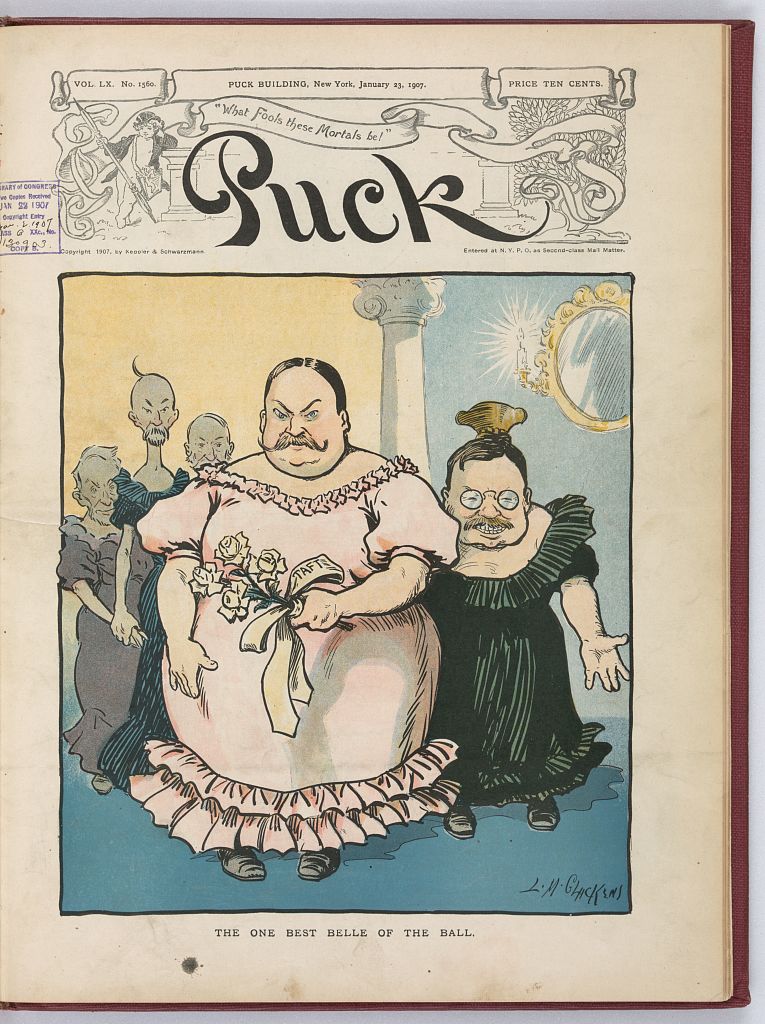
More mockery of TR's preference for Taft over Cannon, Fairbanks, and other presidential hopefuls.
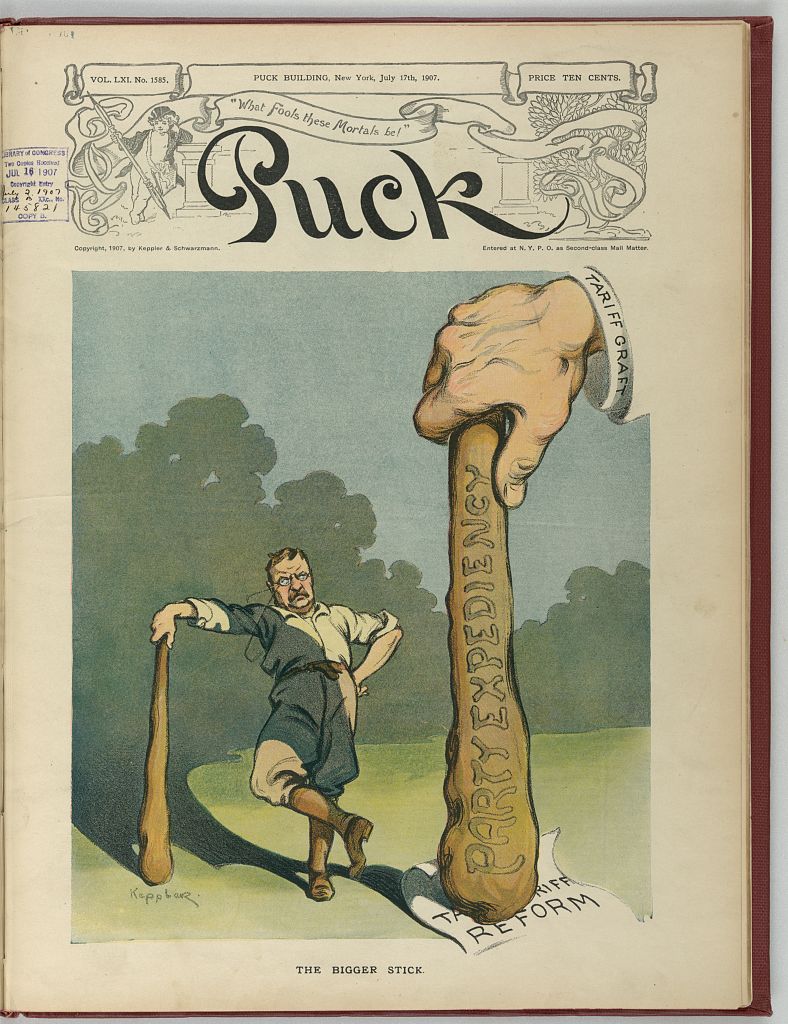
The illustration satirizes TR's retreat on tariff reform, which he abandoned to avoid divisions in the Republican Party.
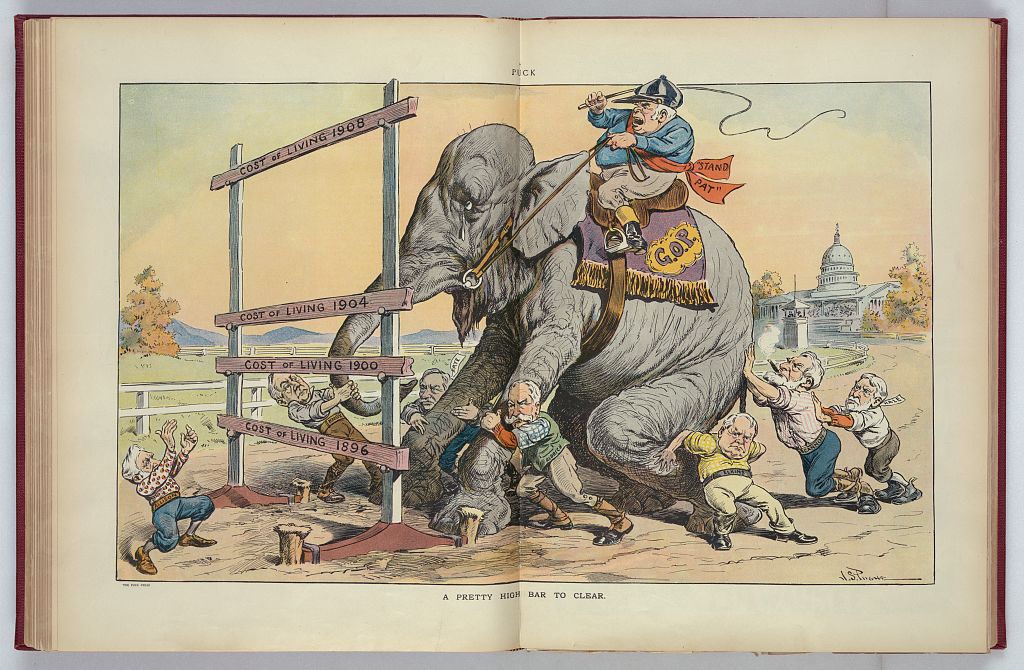
Many voters blamed Republicans for supporting high tariffs, which contributed to the rising the cost of living. Republican leaders worried about losing seats in the 1908 election.
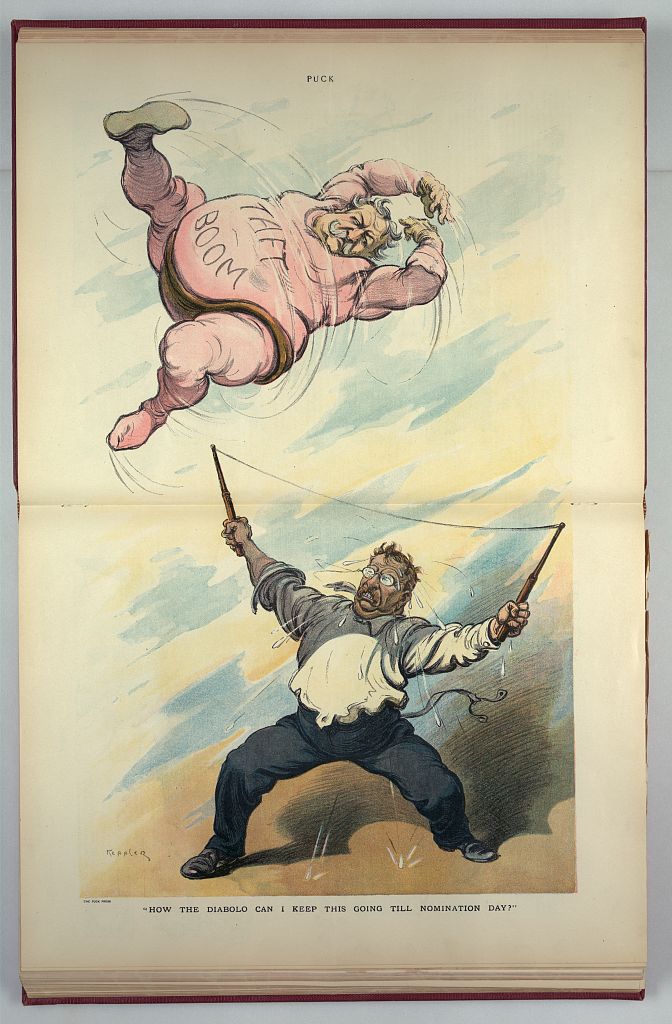
Many Republicans were unenthusiastic about Taft. TR encouraged the party rank-and-file to support Taft's nomination by rewarding loyalists with federal jobs.
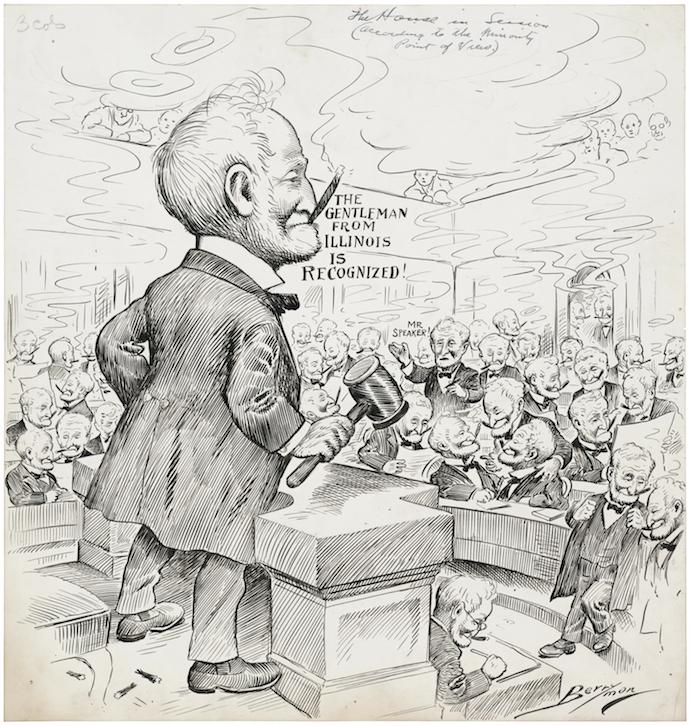
Uncle Joe Cannon, the autocratic House Speaker, only permitted loyal congressmen to offer motions. Each morning, they lined up at his office to request the opportunity to speak on the House floor.
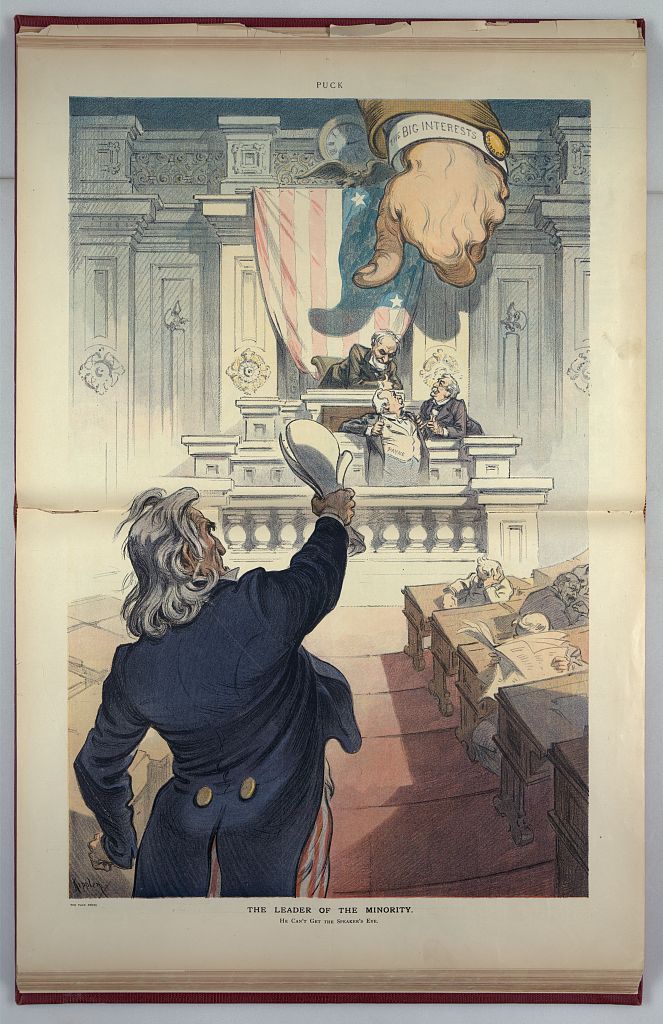
Here, Uncle Sam futilely cries for recognition while "Big Interests" keep Speaker Cannon under the thumb.
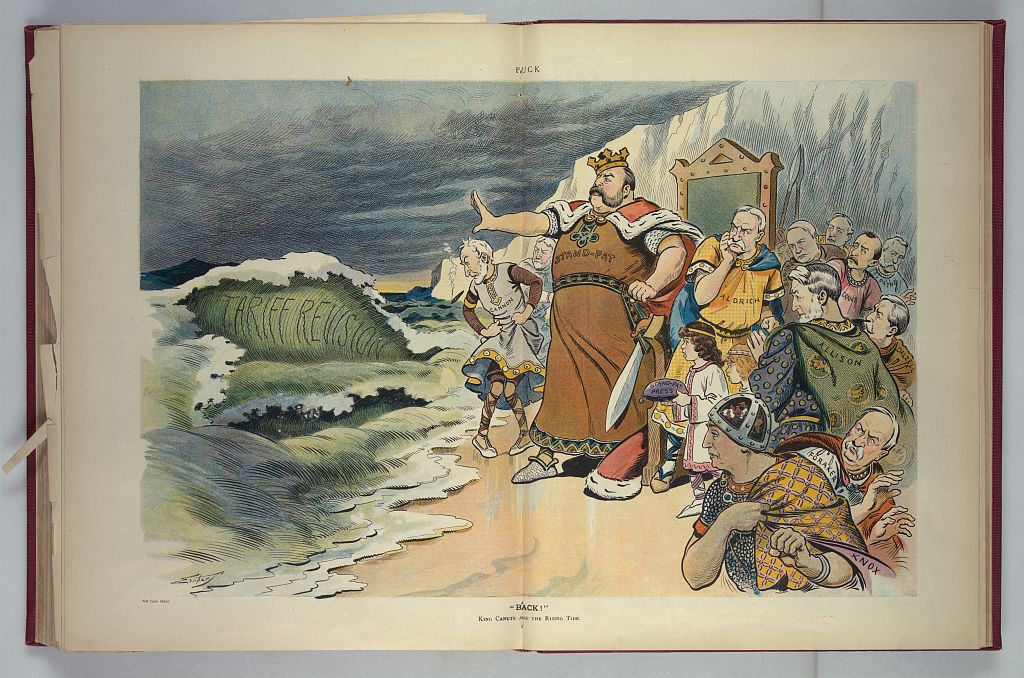
Republican "Standpatters" attempt to ward off a tidal wave of anti-tariff sentiment.
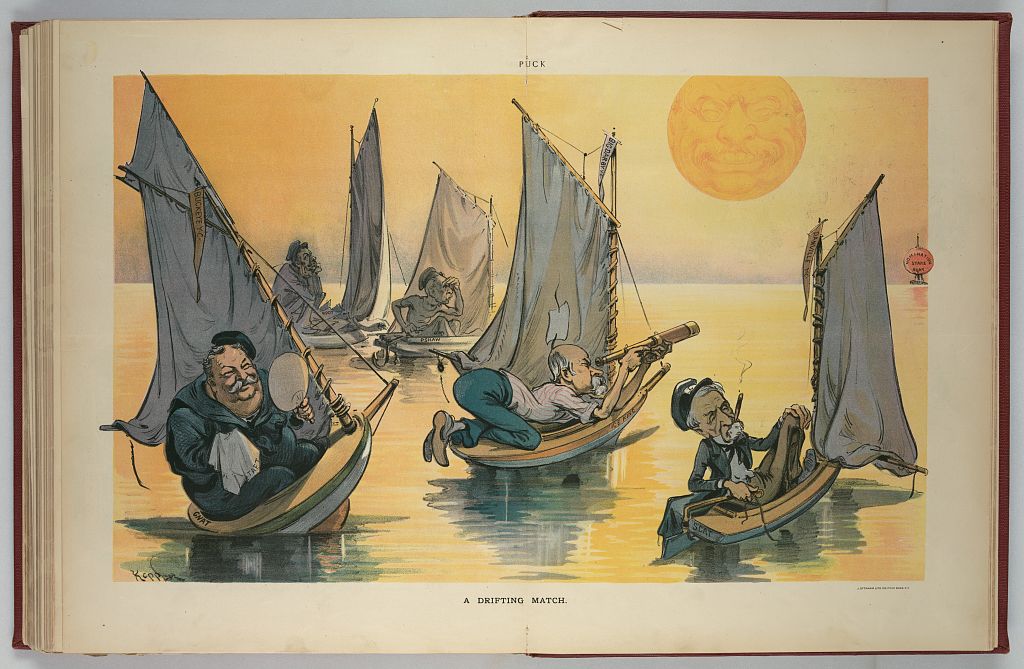
Republican presidential hopefuls, including Taft, Cannon, and Fairbanks, drift toward the nomination as TR looks on.
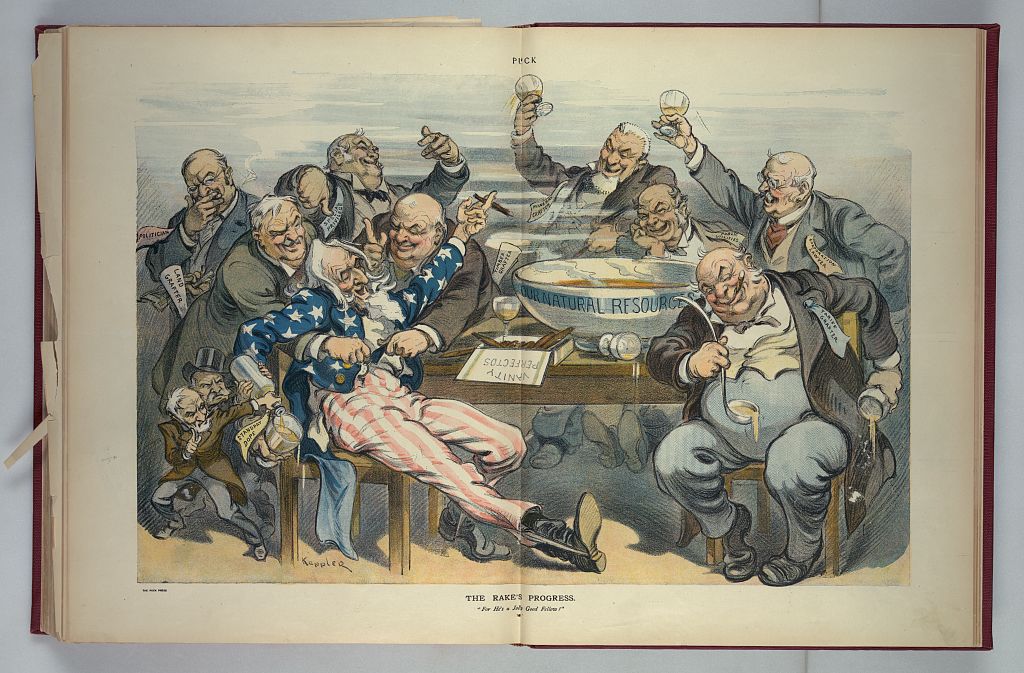
Speaker Cannon and Senator Aldrich pour "Stand Pat Dope" into Uncle Sam's drink while land speculators and corrupt politicians exploit America's natural resources.
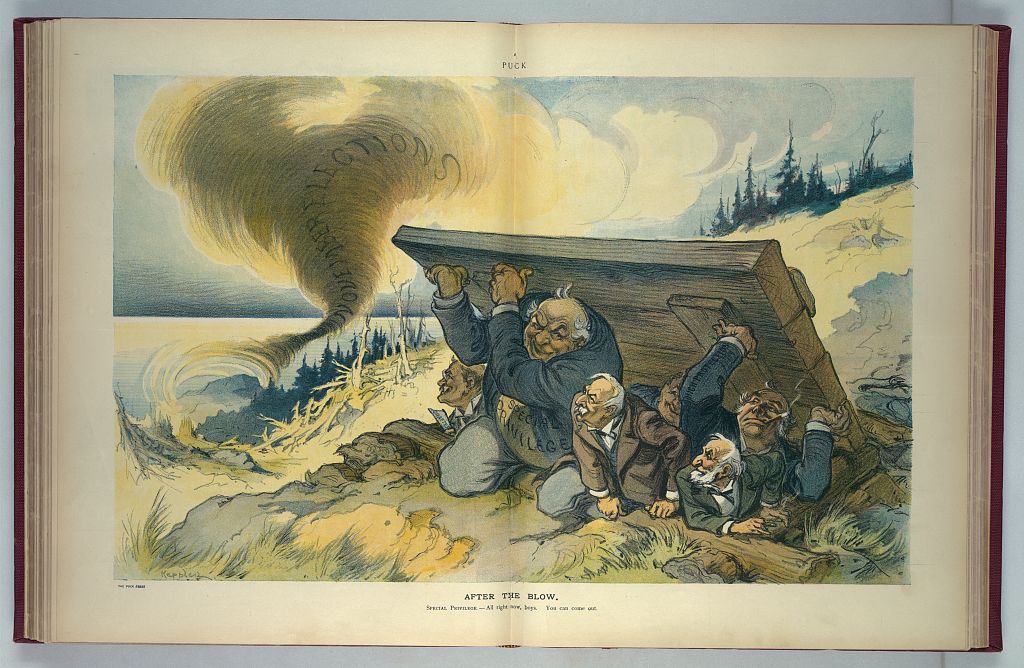
Despite growing public hostility, Republicans survived the 1908 election with minimal losses. Caption: "All right now, boys. You can come out."
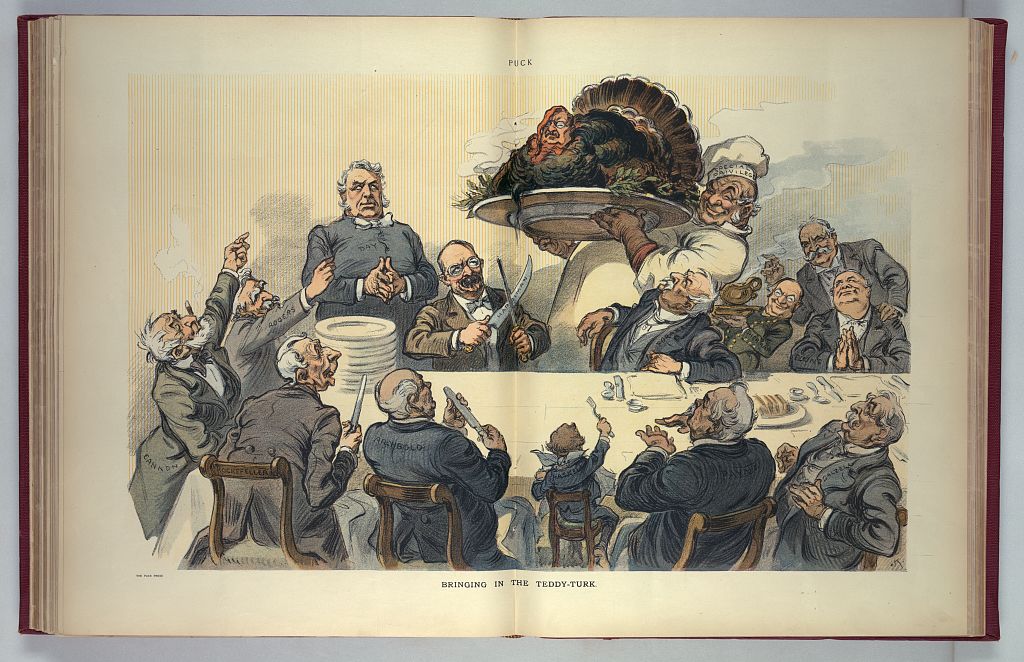
Standpatters and business leaders prepare to devour the "Teddy-Turk" as he enters the lame-duck period of his presidency.
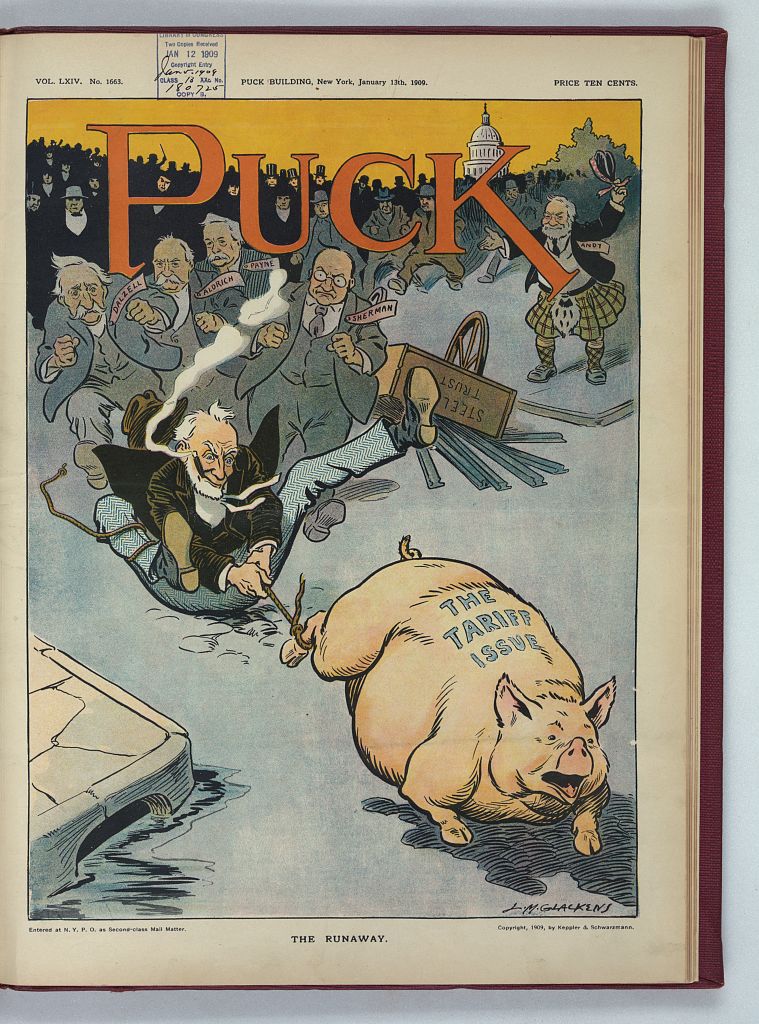
In 1909, Republican leaders reluctantly bowed to popular pressure for tariff revision.
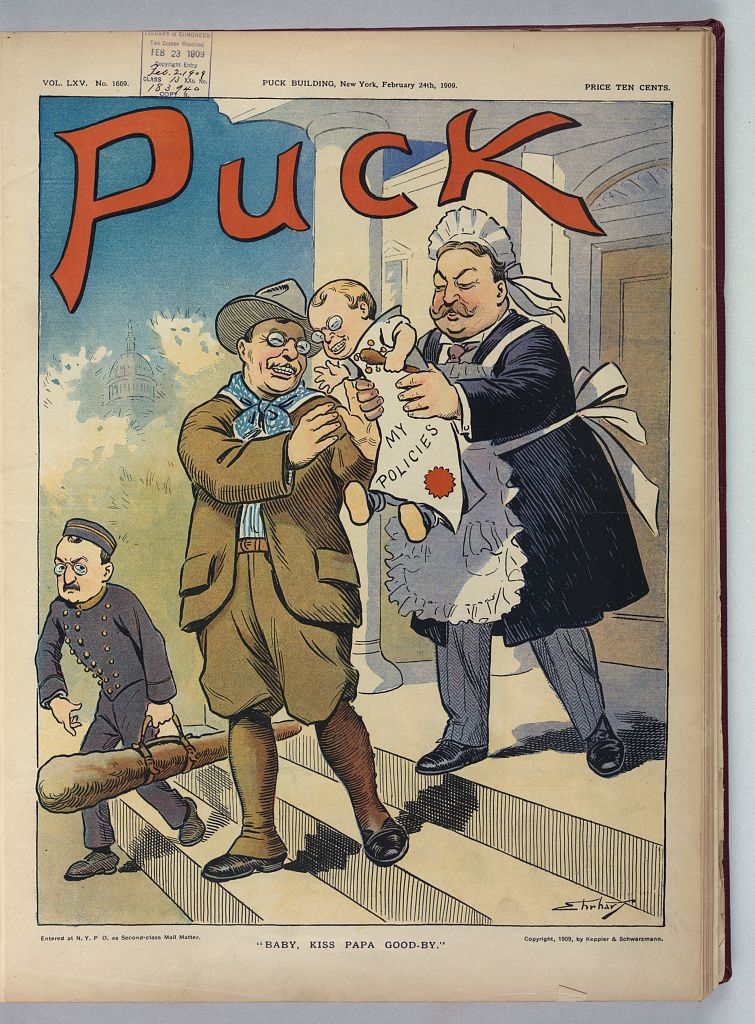
TR left for Africa believing that Taft would continue to promote his progressive reforms.
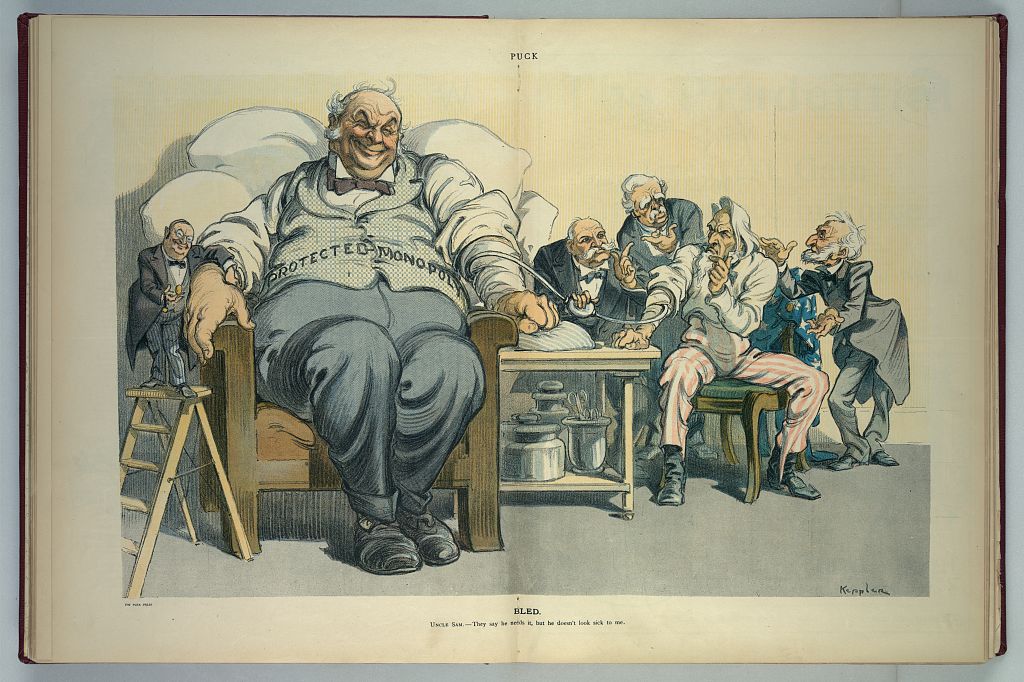
Standpatters continued to resist anti-trust legislation on the grounds that it would hurt industry. Caption: "Uncle Sam: They say he needs it, but he doesn't look sick to me"
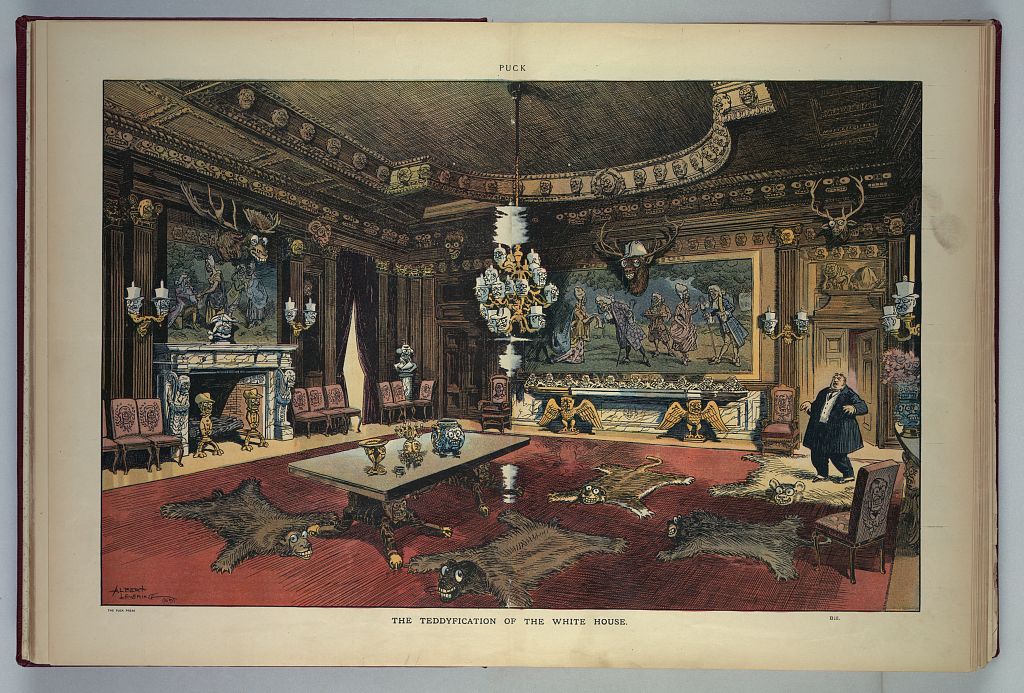
TR remodeled the White House during his first term, stuffing it with hunting trophies. As president, Taft had trouble escaping TR's shadow.
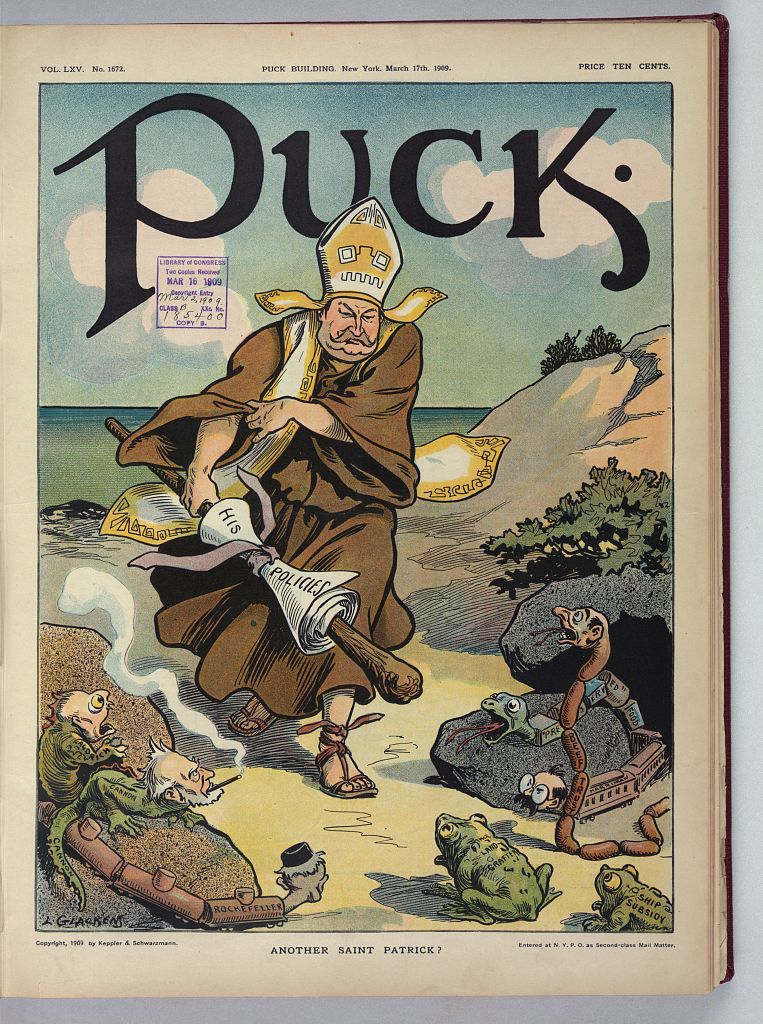
Taft promised to continue TR's policies, raising expectations that he would take on Aldrich, Cannon, and the trusts, depicted here as snakes and lizards.

After fifteen years in the minority, the Democratic Party was powerless and riven by infighting.

Tariffs benefitted trust companies by stifling competition and raising prices at consumers' expense. Here, Uncle Joe Cannon shows the trusts where to strike for maximal profit.
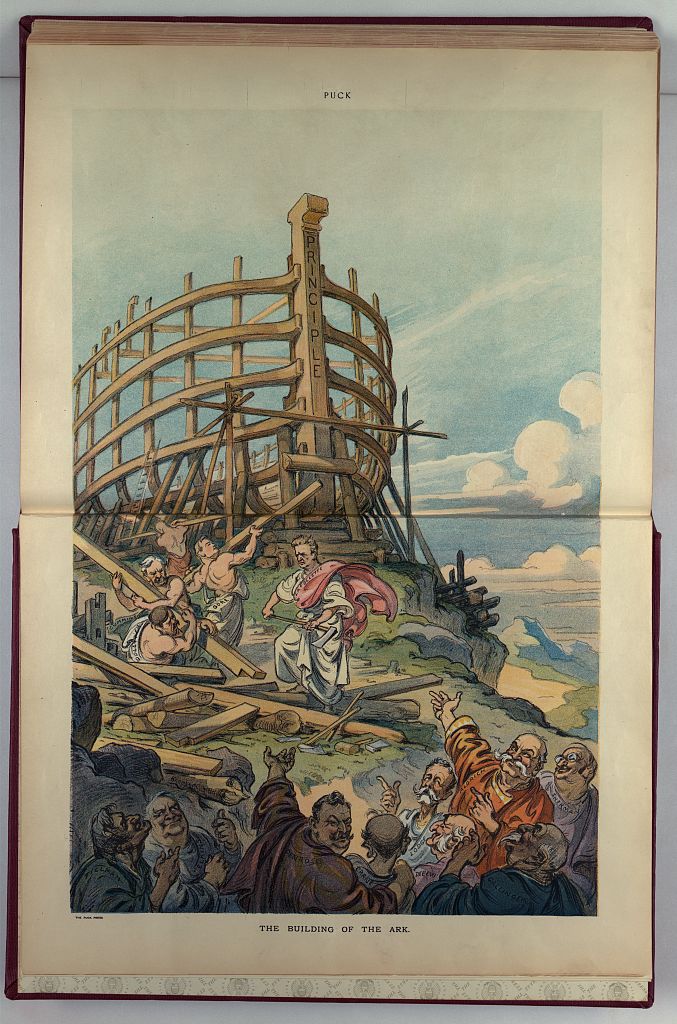
Senator La Follette and a small band of Republican insurgents defied their party by demanding lower tariffs.

Aldrich proposed higher tariffs to reduce the federal deficit. Here, he is depicted as a devilish bartender feeding Uncle Sam's tariff addiction. Caption: "Quit nothin'! Why, a little more of the same'll make you feel O.K."
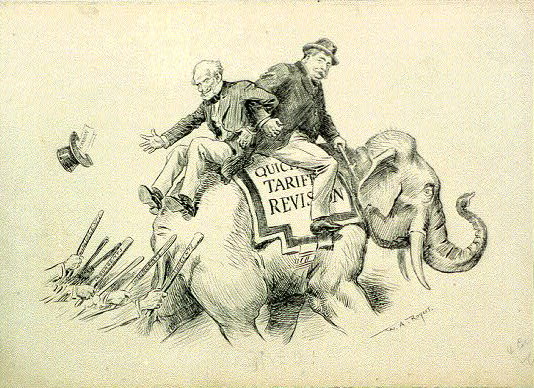
Taft worked closely with Cannon and Aldrich to expedite the tariff bill, ignoring the complaints of Republican insurgents.

Though the revisions were mostly cosmetic, Taft praised the legislation as the best tariff bill ever passed.

Taft further antagonized progressives by publicly praising Senator Aldrich.
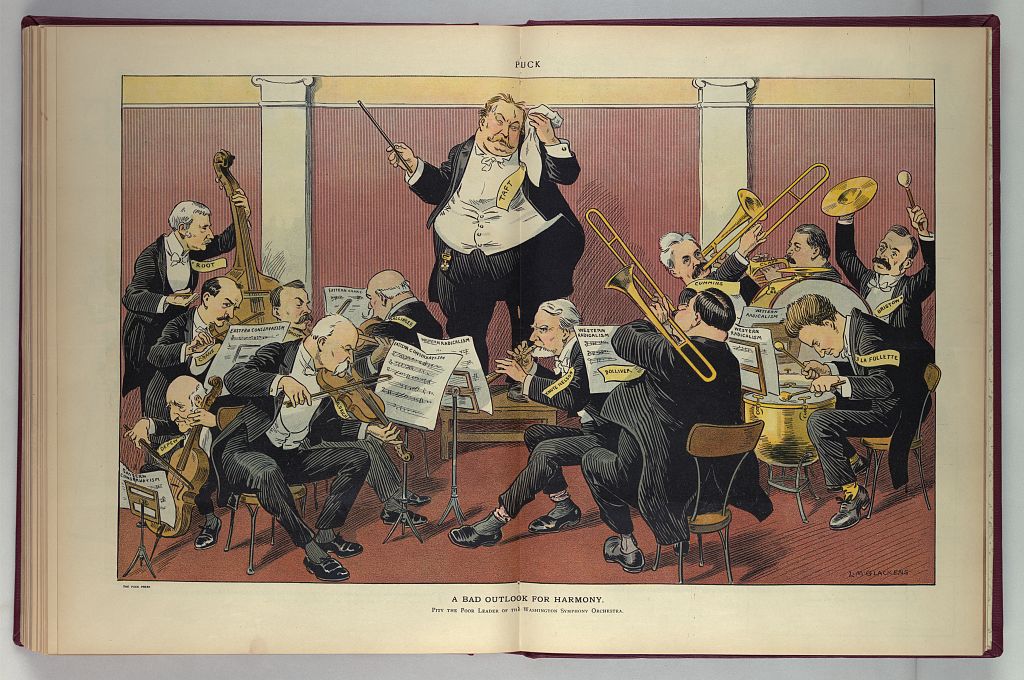
Taft had promised "harmony" during his campaign, but by the end of his first year, the Republicans stood at the brink of civil war. Caption: "Pity the poor leader of the Washington Symphony Orchestra."

Taft tries to pour "Roosevelt Progressive Policies" into cracked bottles labeled Aldrich and Cannon.
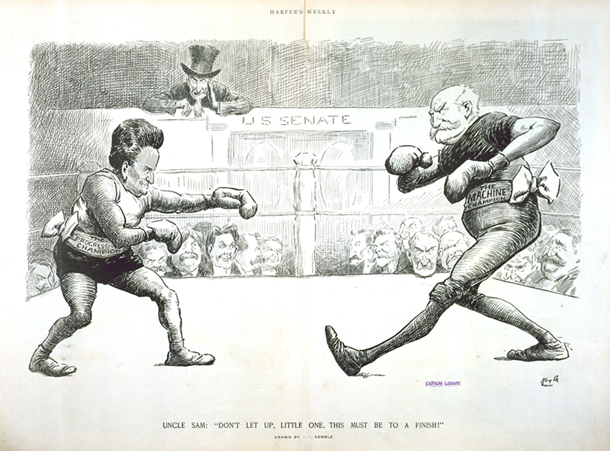
La Follette, the "Progressive Champion," fights Aldrich, the "Machine Champion," for control of the Senate. Caption: "Don't let up, little one, this must be to a finish!"
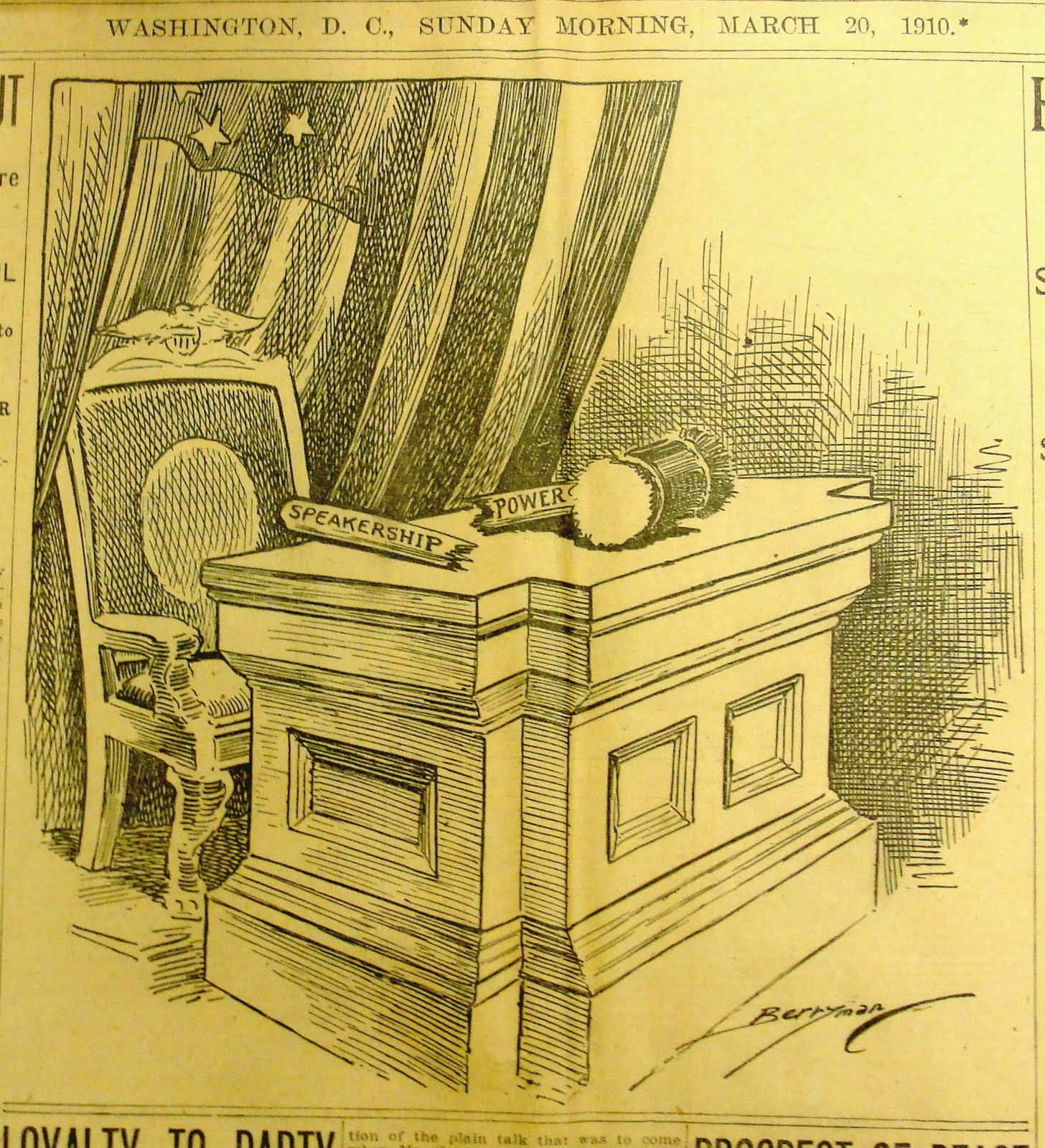
On March 19th, 1910, a coalition of Democrats and Republican insurgents voted to reduce Speaker Cannon's powers.
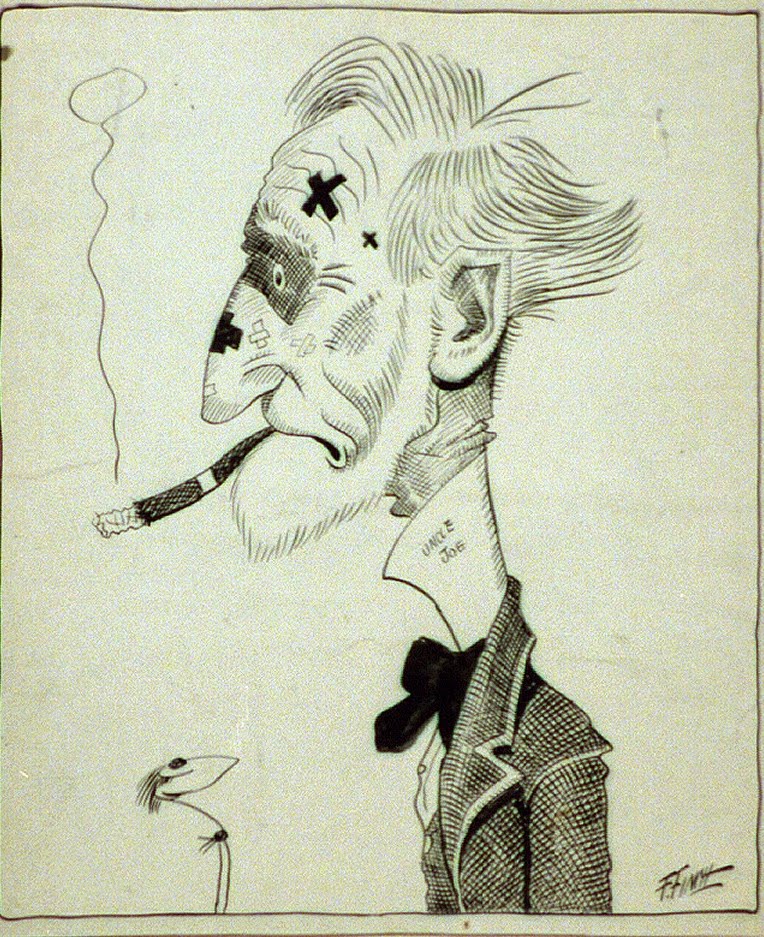
Uncle Joe Cannon, battered and bruised after the insurgents curtailed his authority.
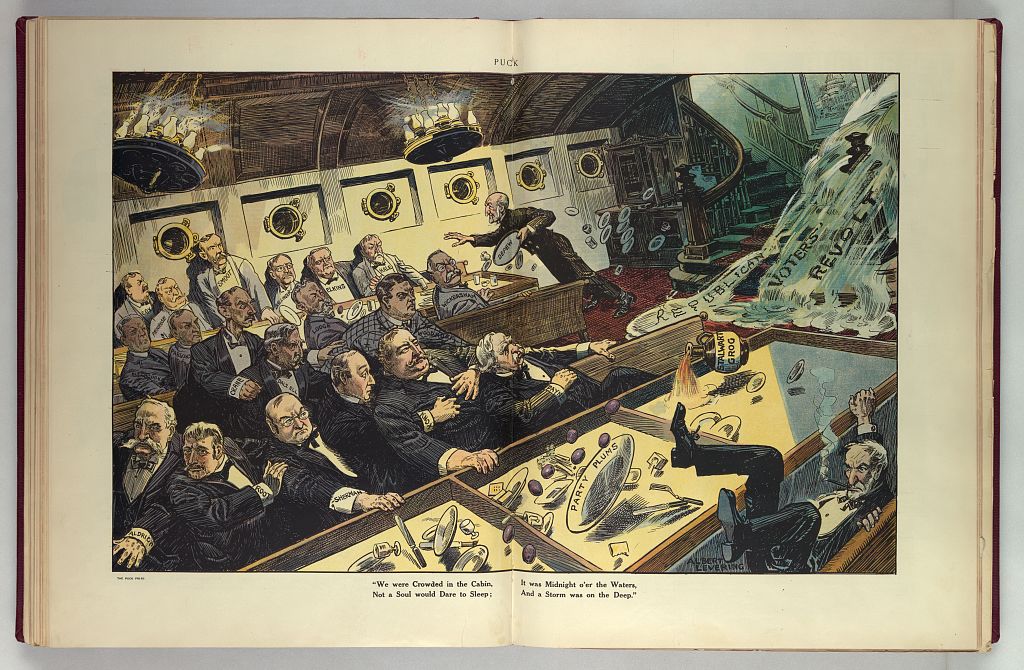
A wave labeled "Republican Voters' Revolt" crashes into a ship's dining room where the Standpatters are feasting.
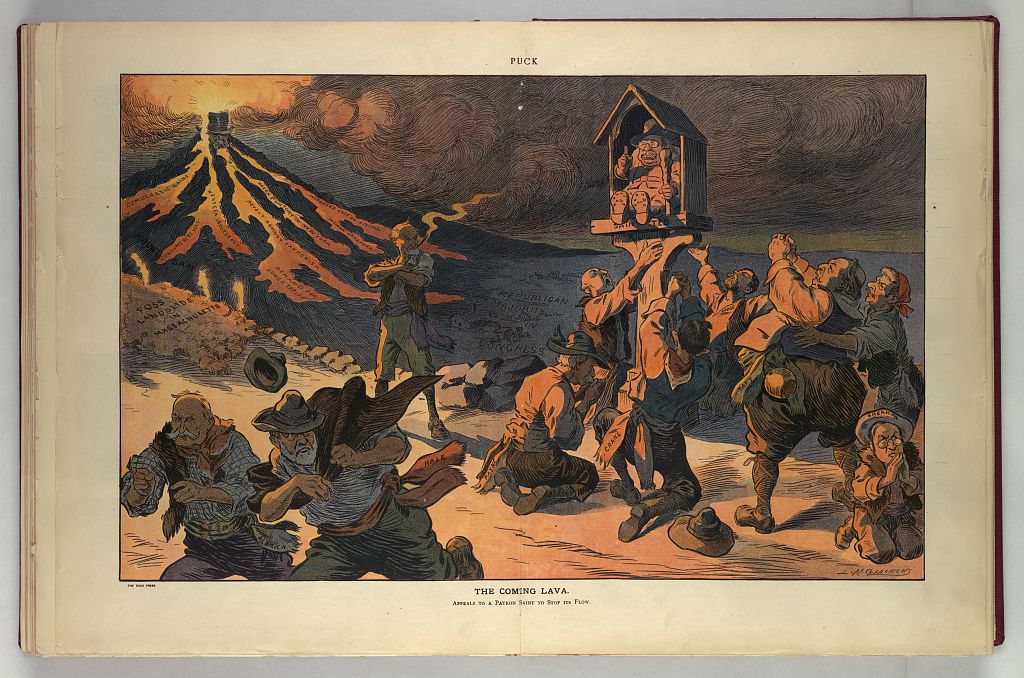
As Taft's popularity plummeted, some Republicans looked to TR for salvation.
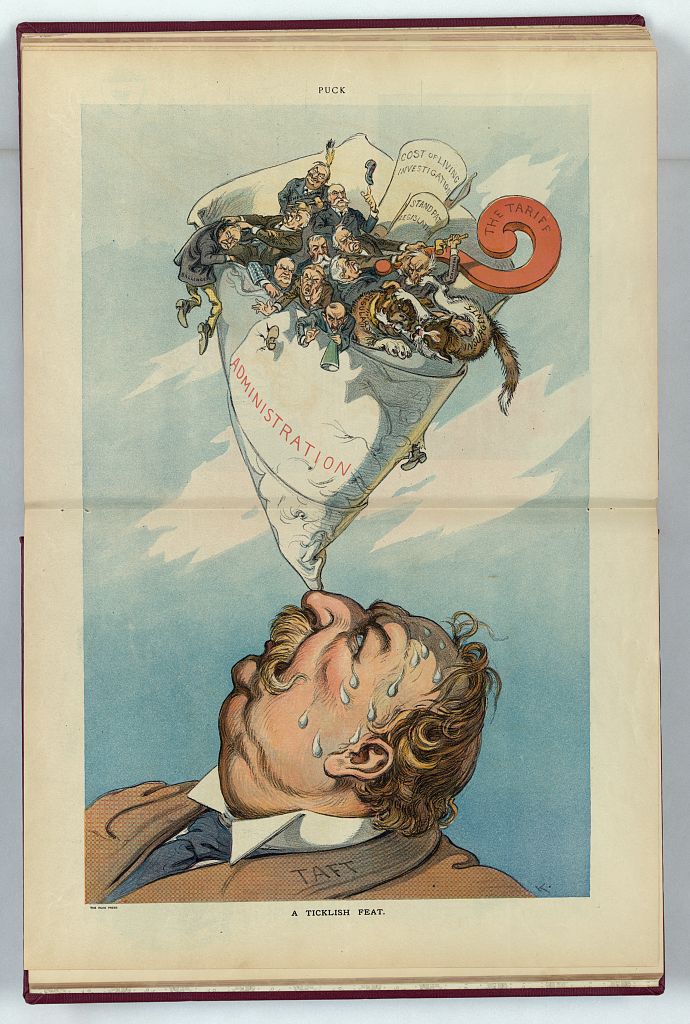
Taft struggled to deal with the Ballinger affair, Republican infighting, and unpopular legislation.
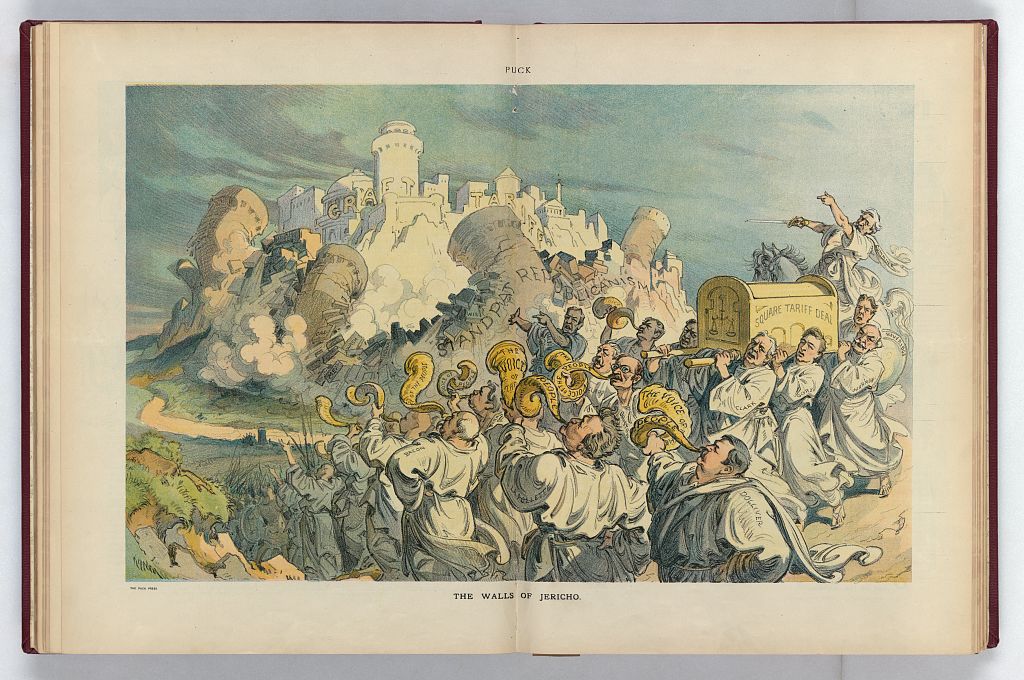
As the midterm election neared, Democrats and Republican insurgents hoped to wrest control of Congress from the Standpatters.
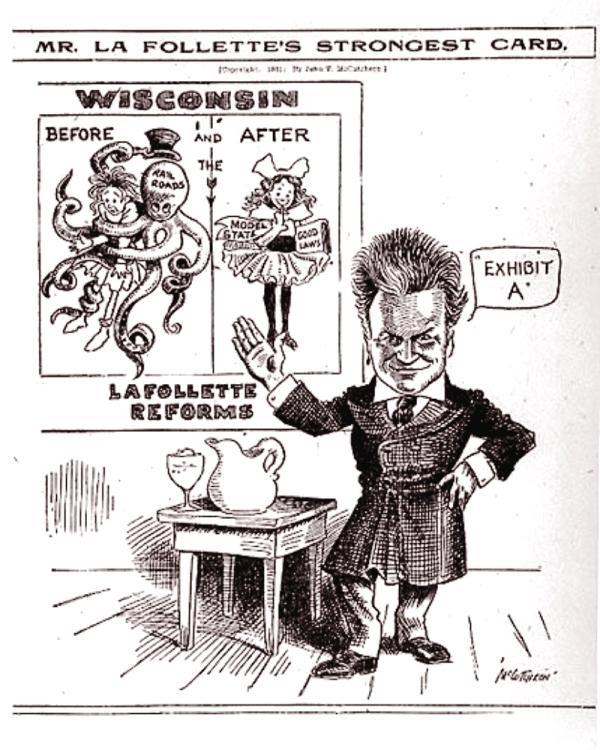
La Follette, running for the Republican presidential nomination, highlights his progressive achievements in Wisconsin.
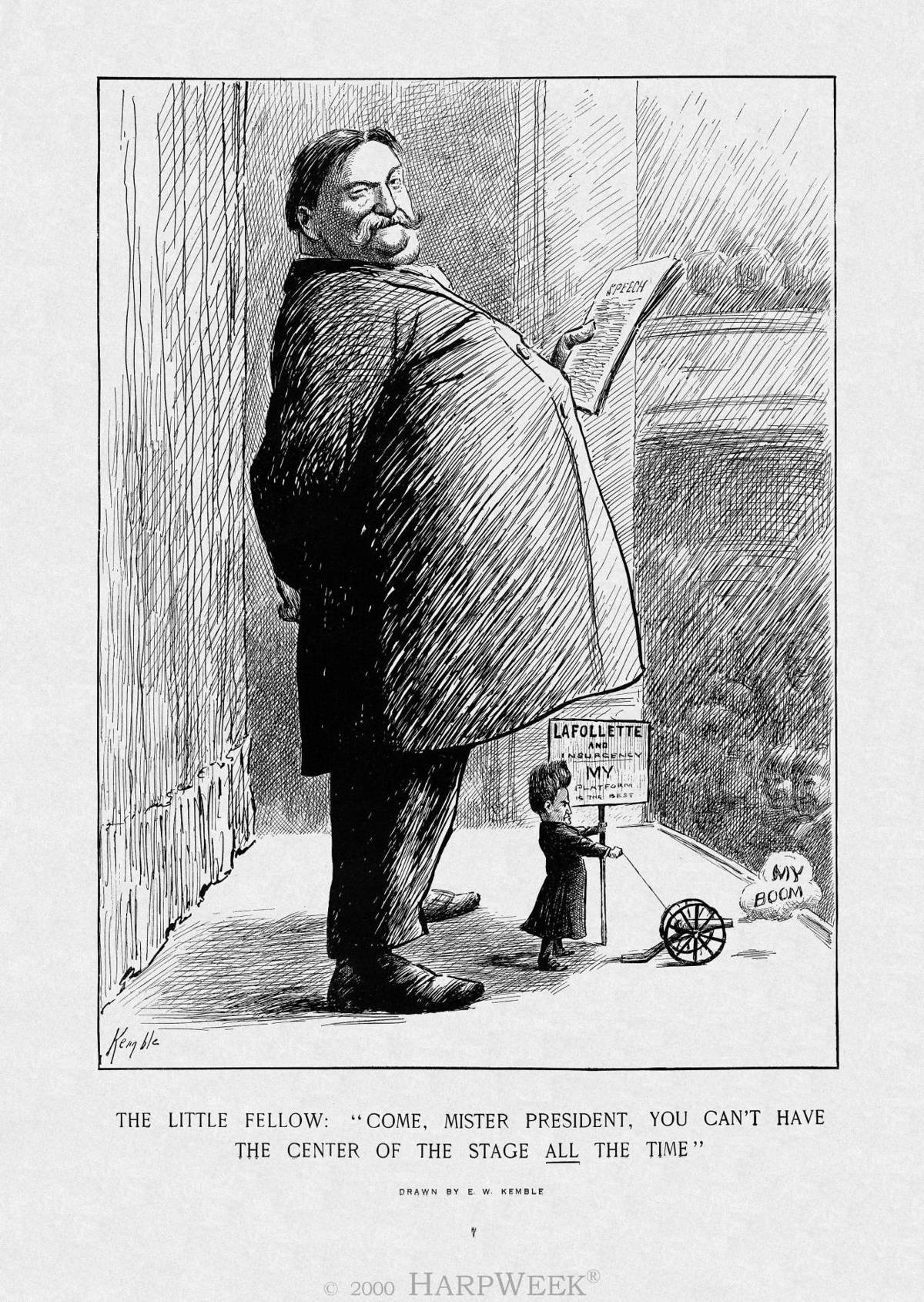
The illustration satirizes La Follette's long-shot campaign to defeat Taft.
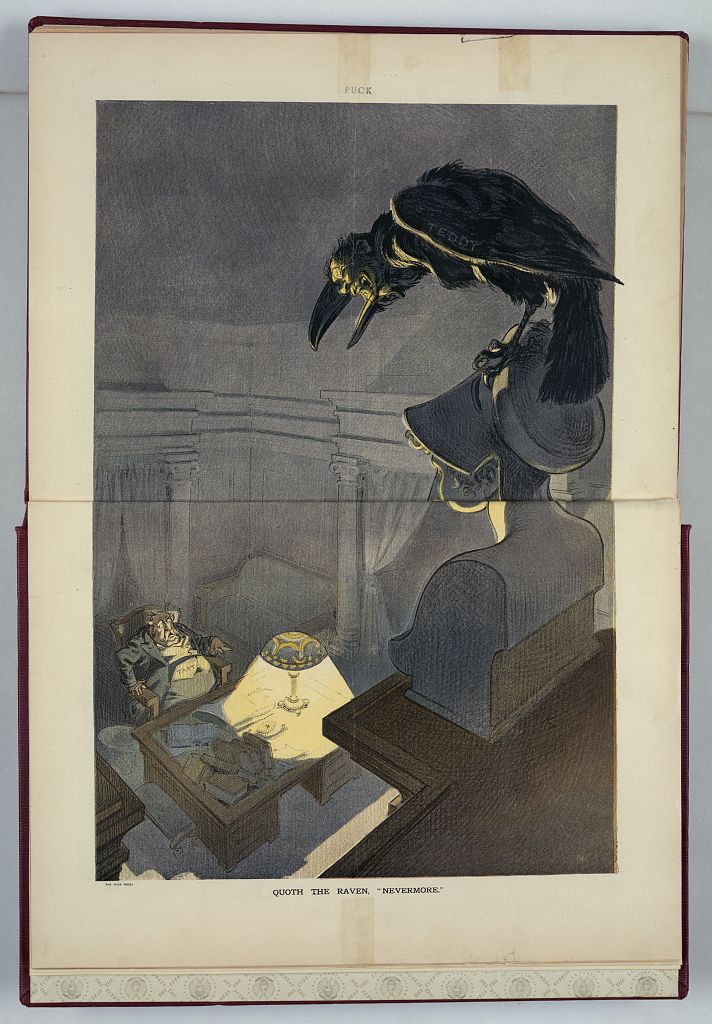
TR was unhappy with Taft's leadership. As their relationship deteriorated, Taft feared that TR would challenge him for the Republican presidential nomination.
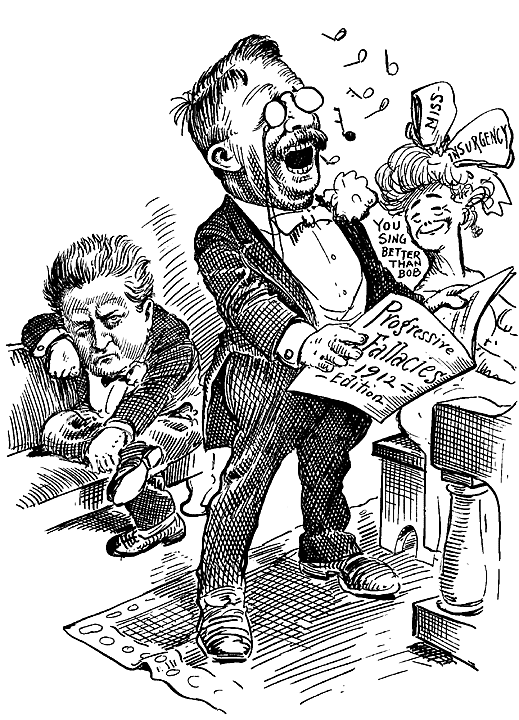
When TR announced his candidacy, he abruptly siphoned off La Follette's progressive supporters, infuriating La Follette.
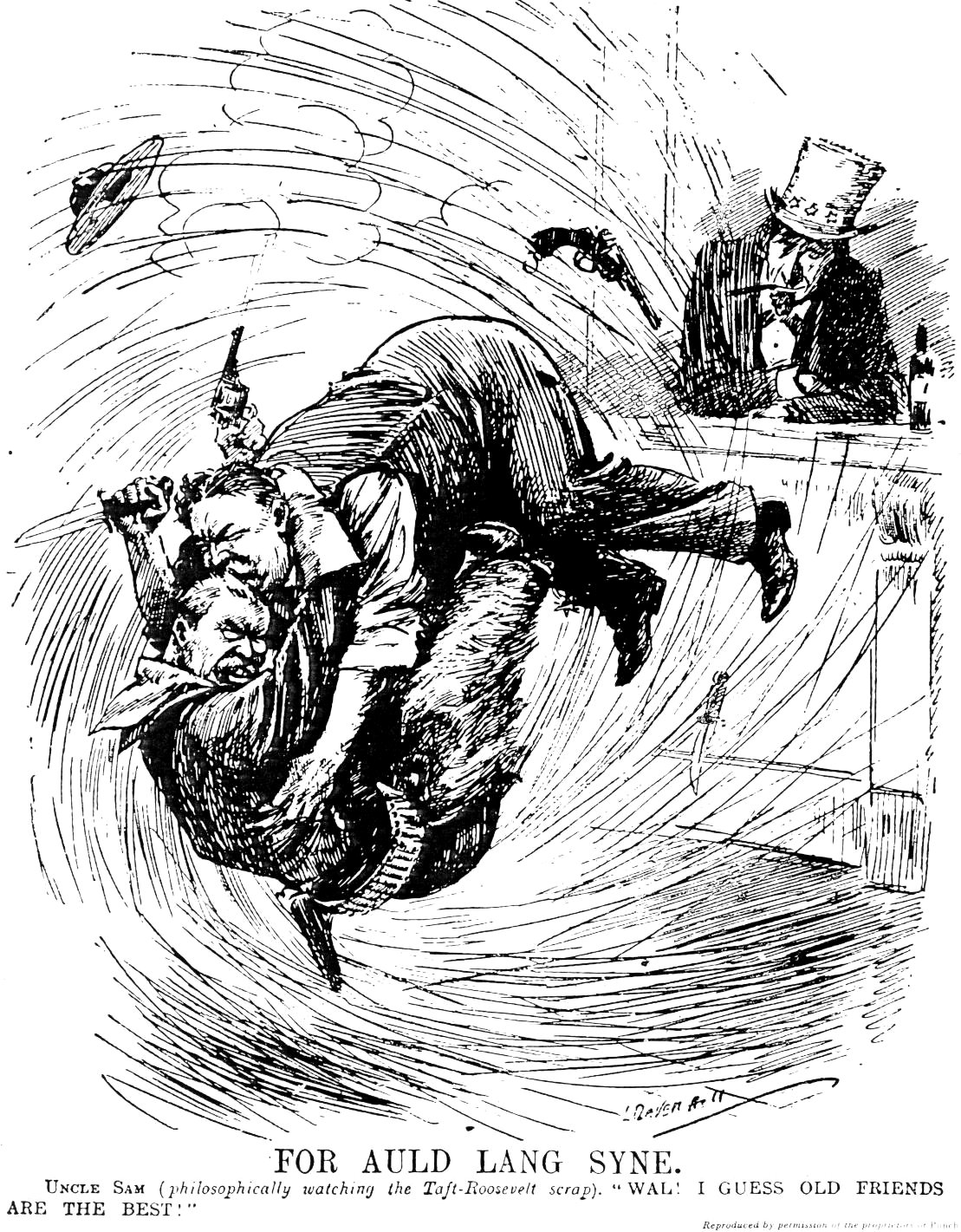
As Taft and TR fought for the Republican nomination, their friendship shattered. Taft called TR a “dangerous egotist,” a “demagogue,” and a “flatterer of the people.” TR called Taft a “puzzlewit” and a “fathead” with the intellect of a guinea pig. The epithets escalated—“honeyfugler,” “hypocrite,” “apostate,” “Jacobin,” “brawler.”
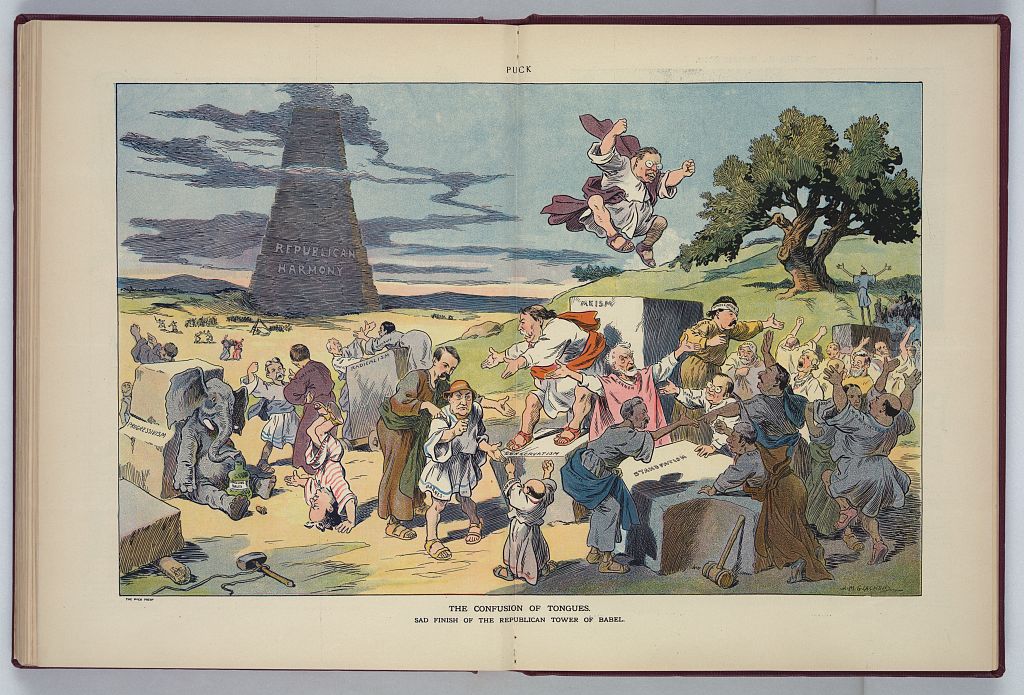
By 1912, the once unified Republican Party was splintered by ideological factions and personal feuds. Caption: "Sad finish of the Republican Tower of Babel."
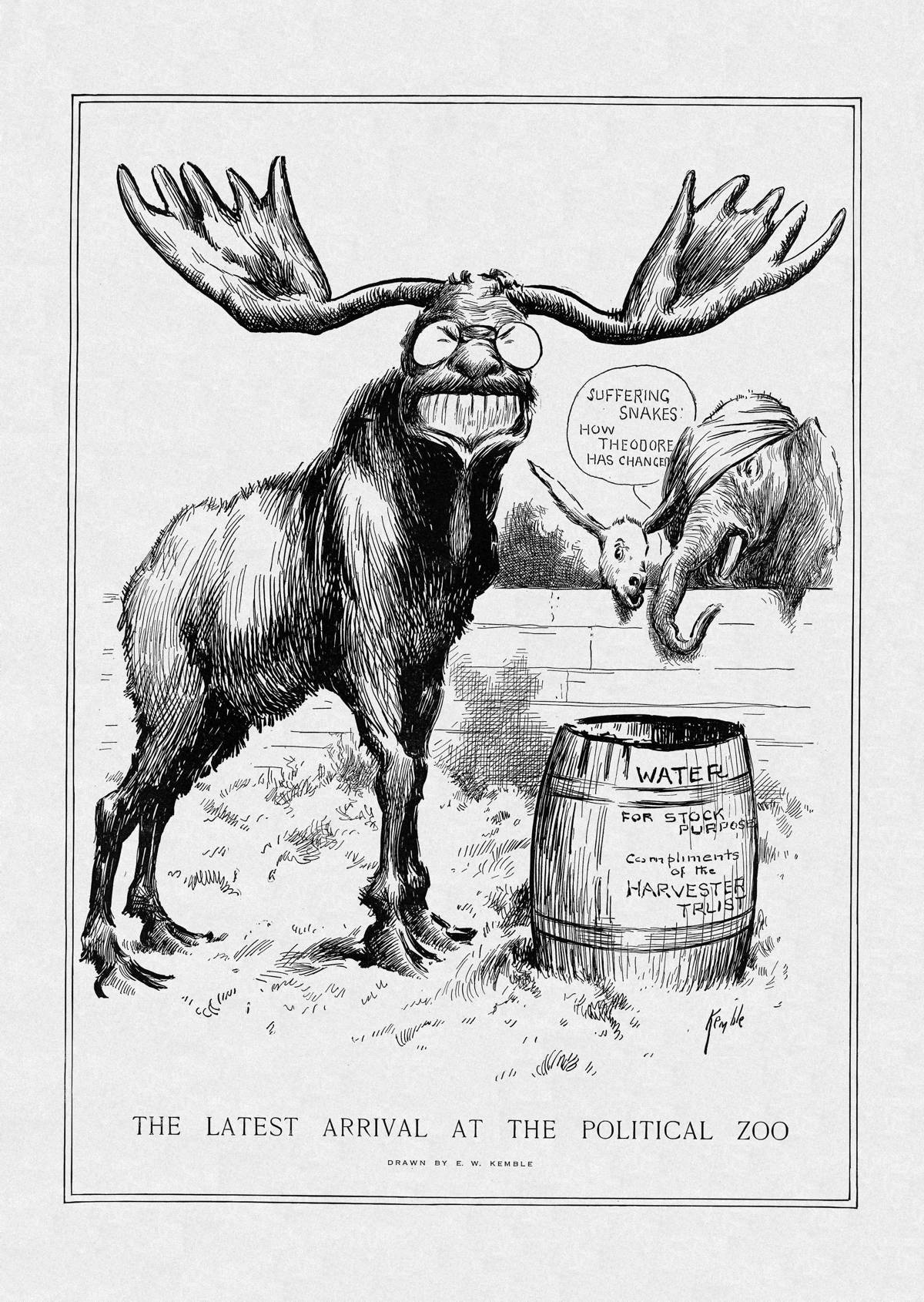
After losing the nomination to Taft, TR bolted the Republican convention to start a new progressive party popularly known by its nickname, the Bull Moose party.



























































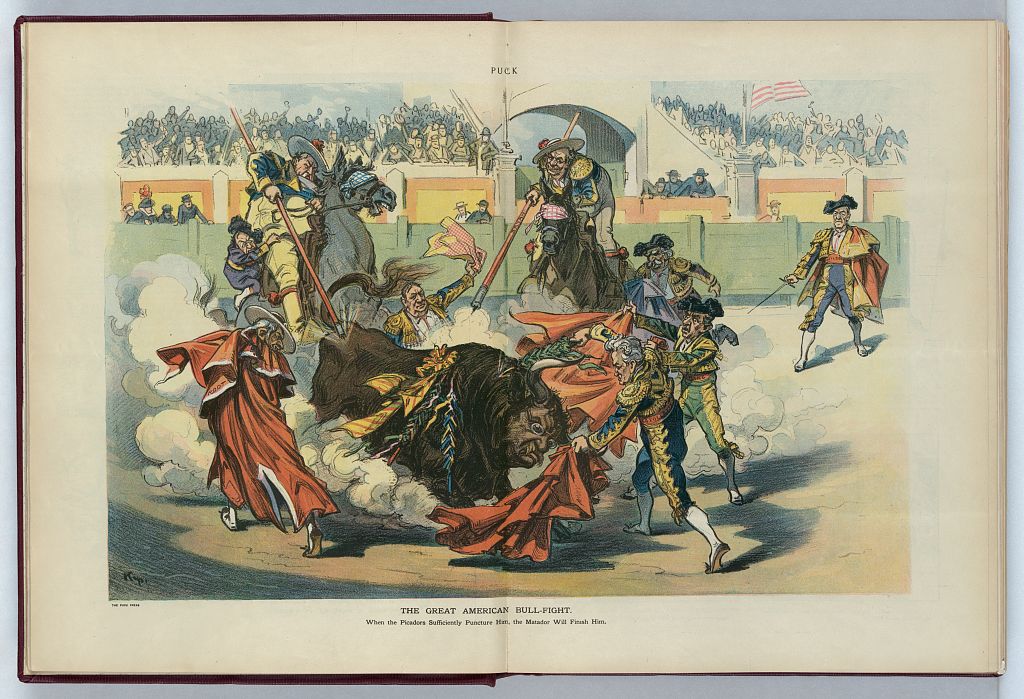
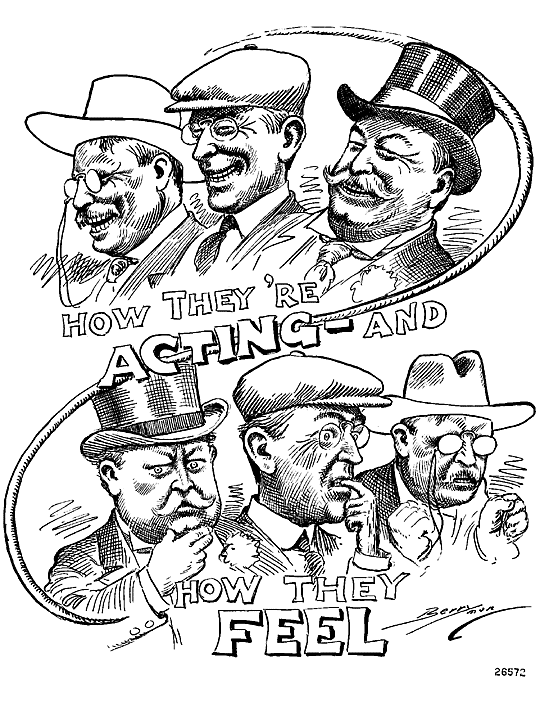
Hold the mouse over an image to see a description. Click the image to visit the source page.

